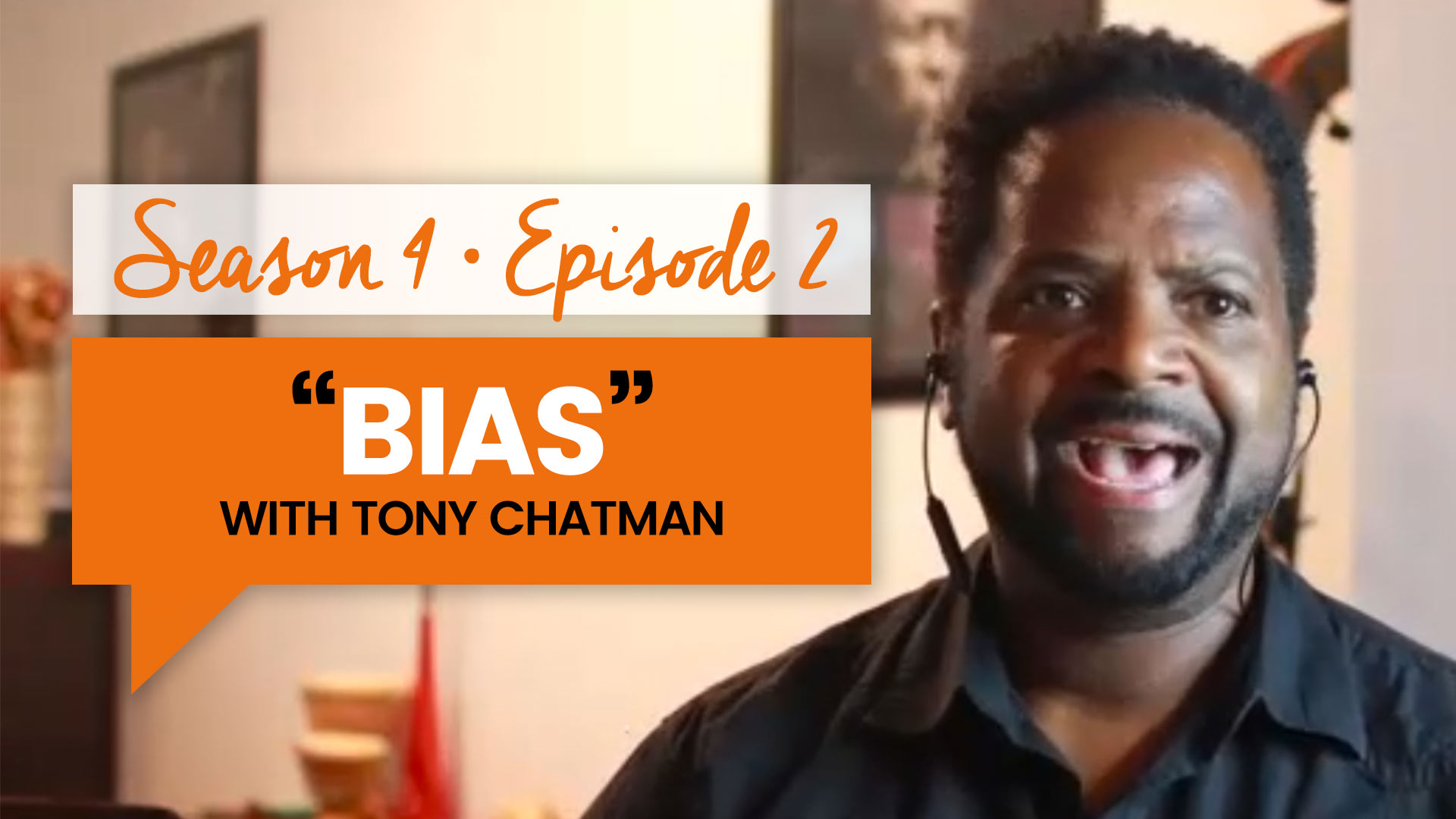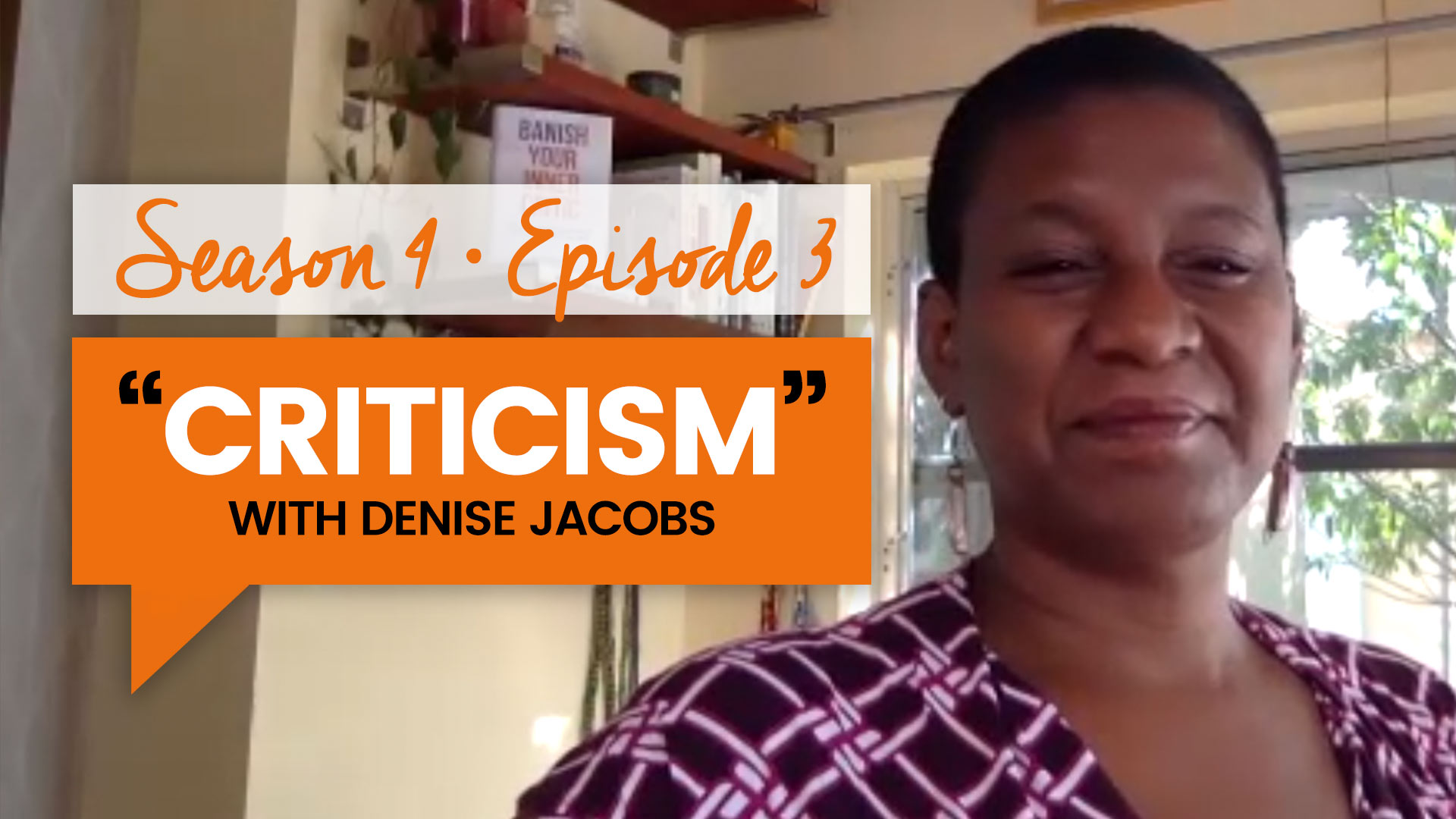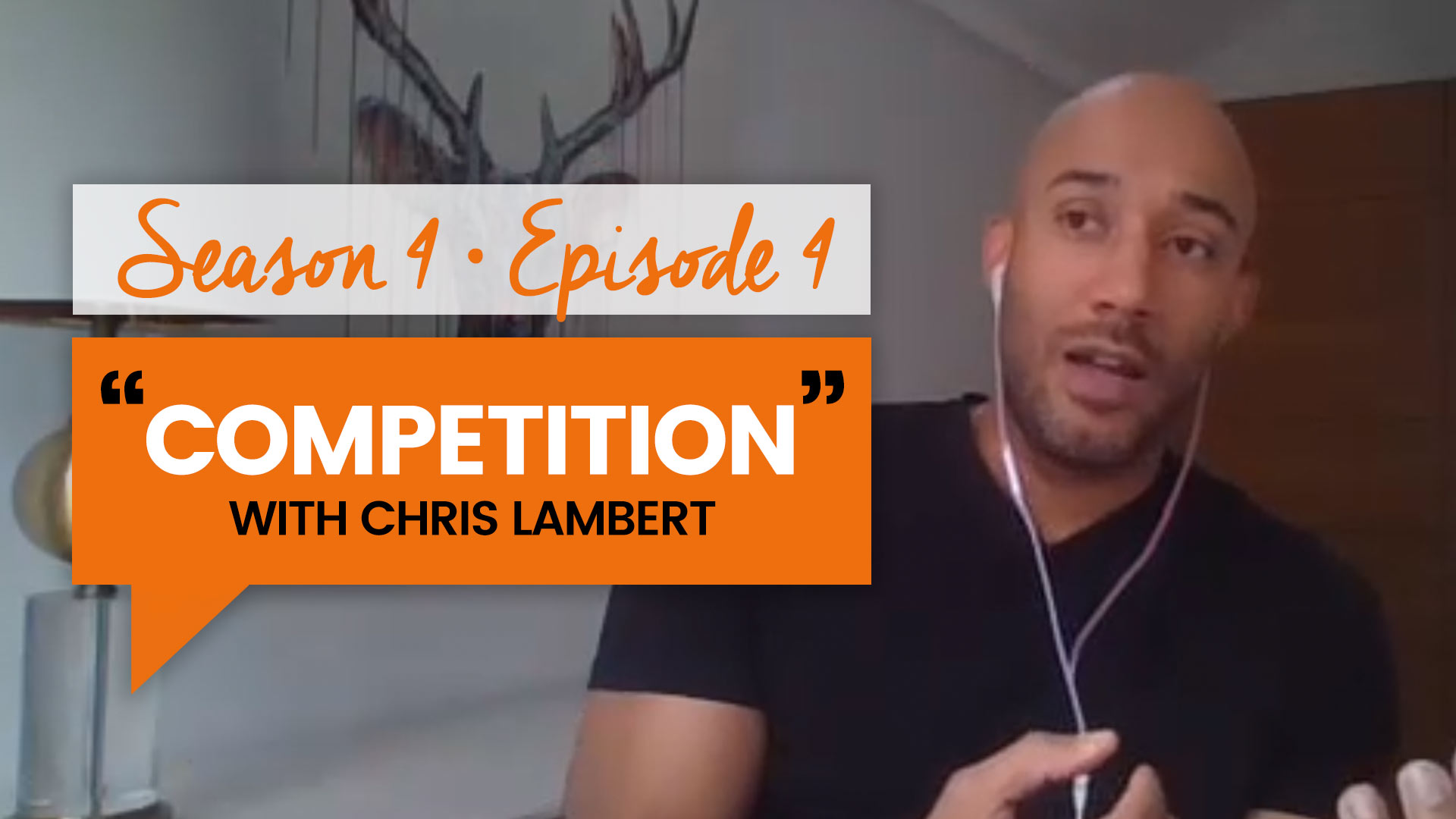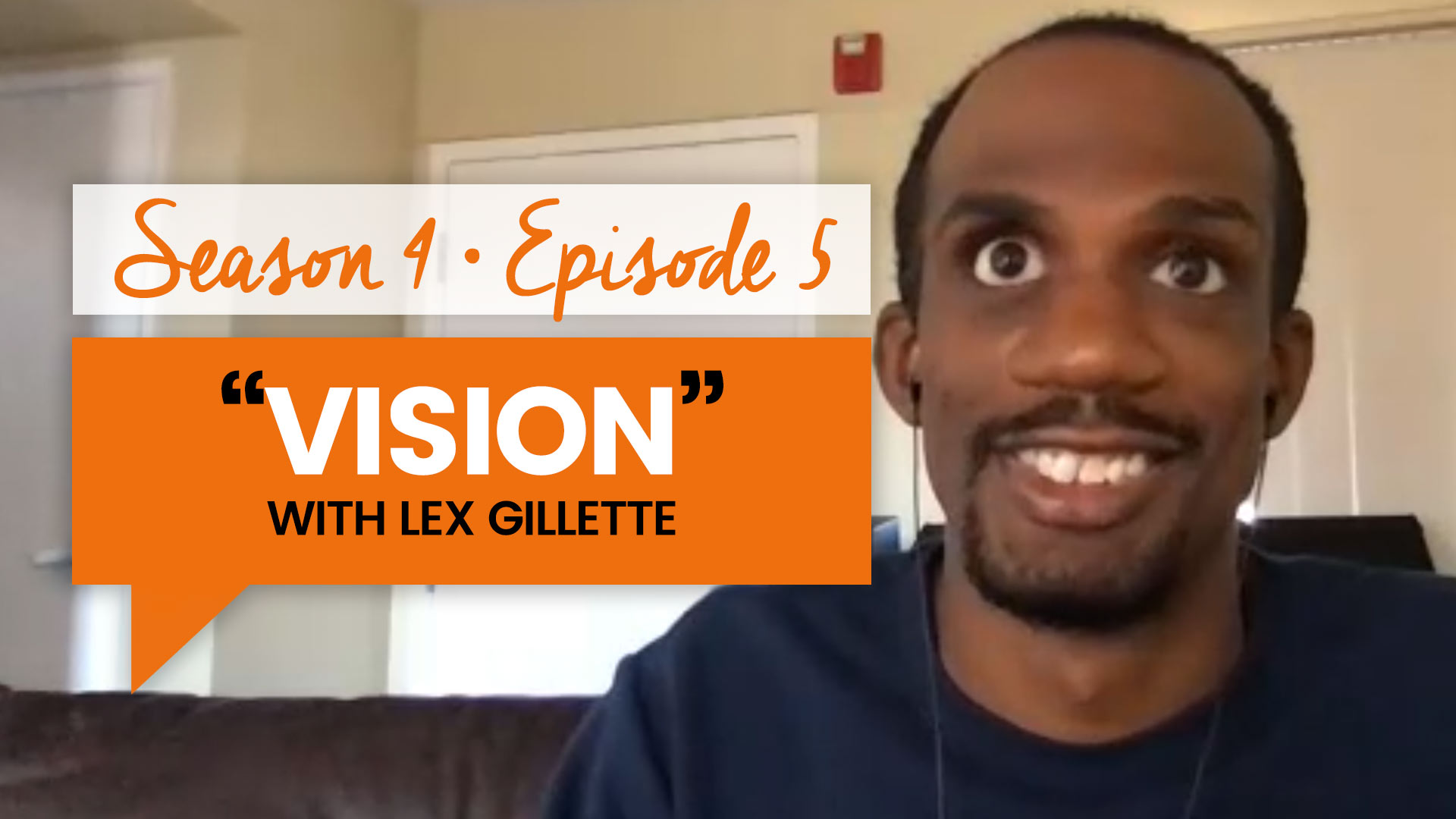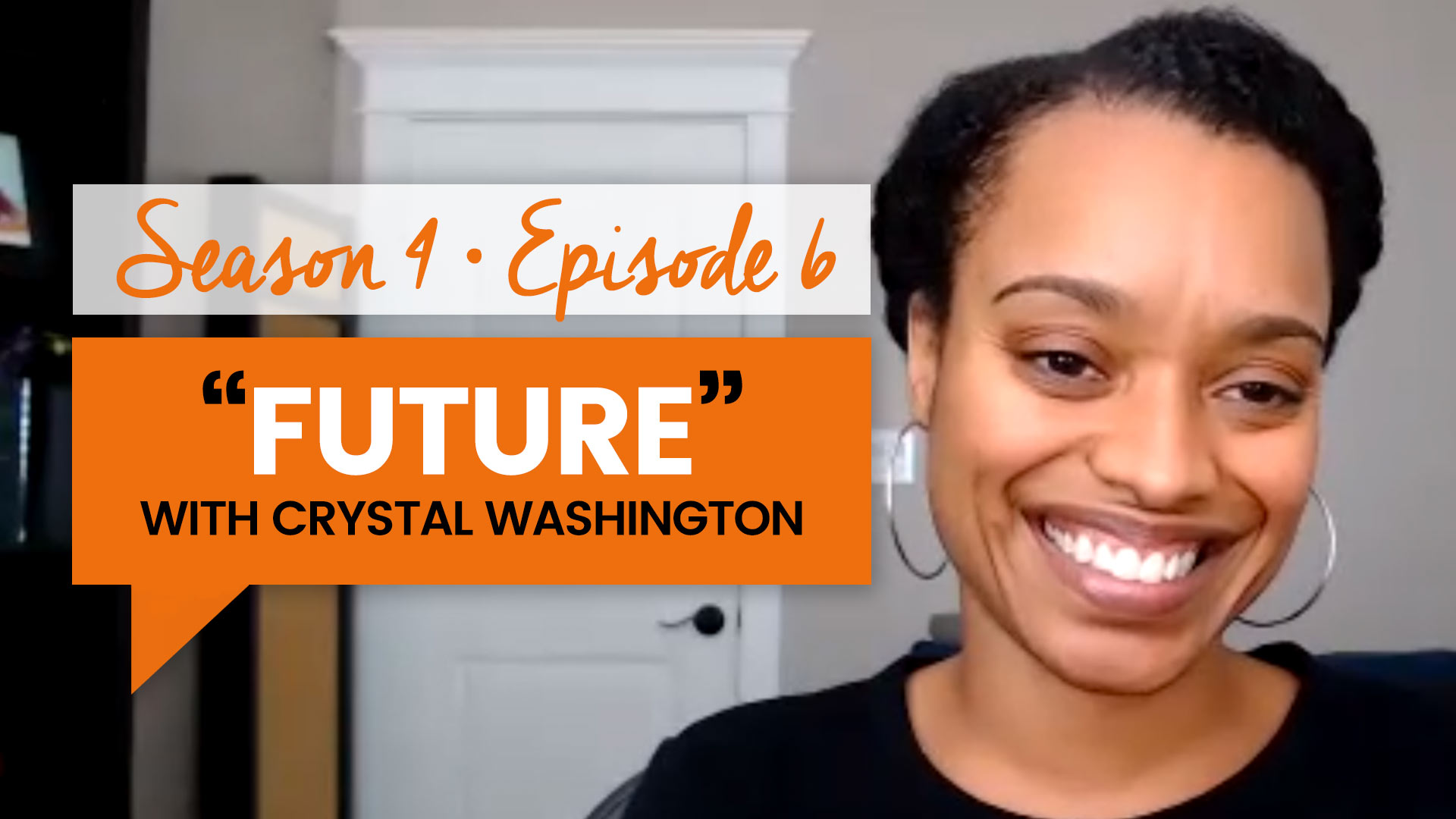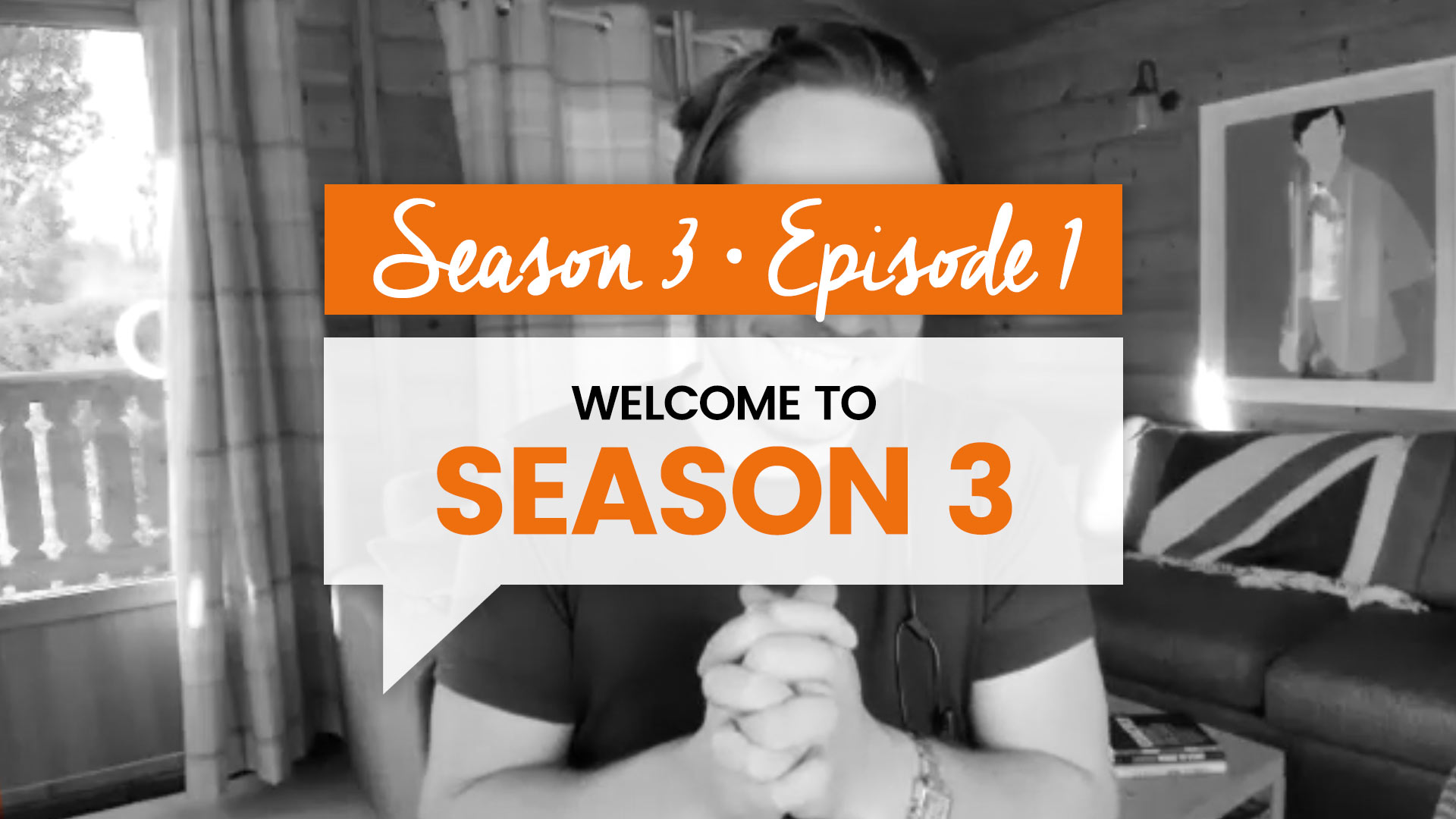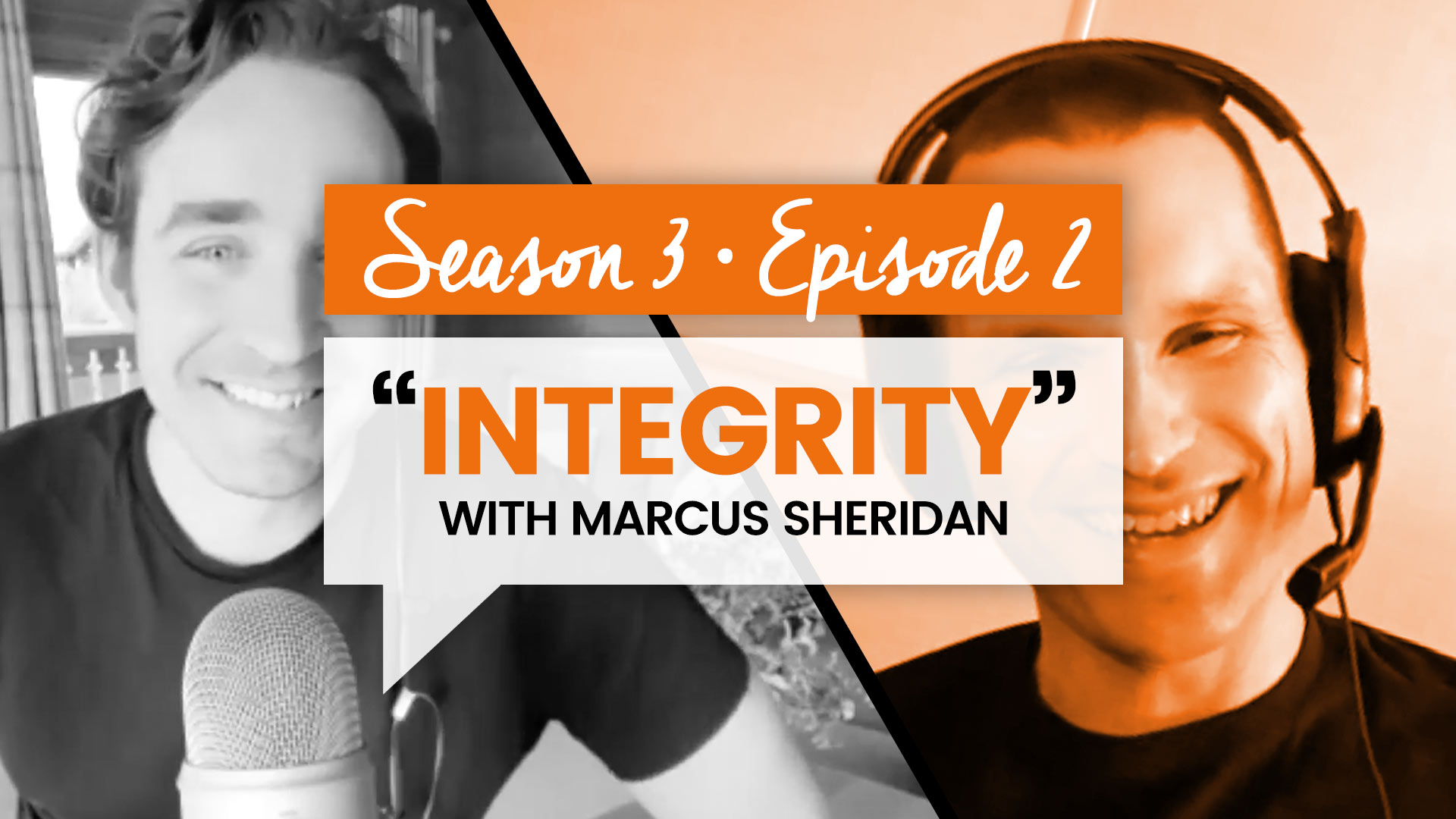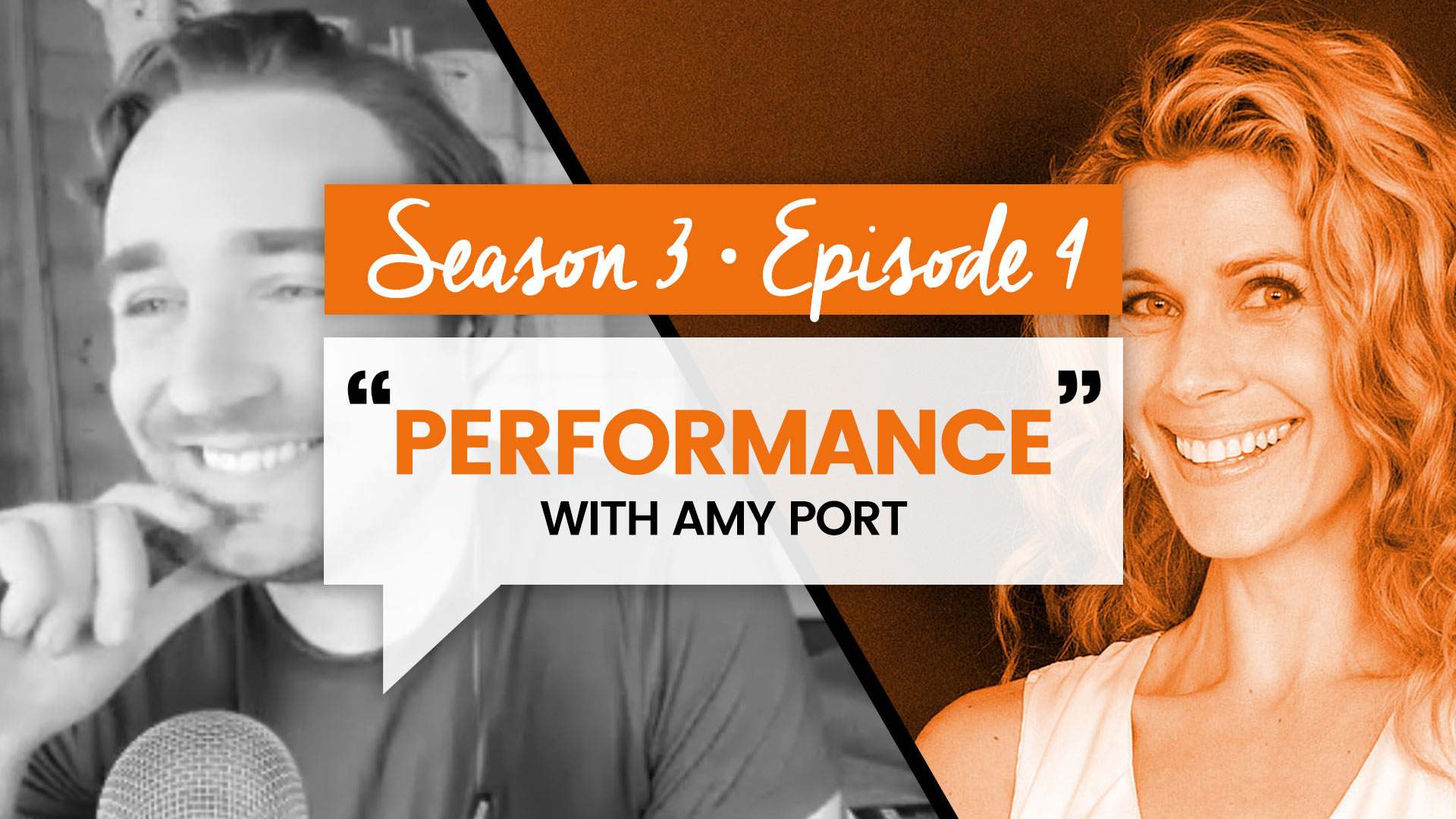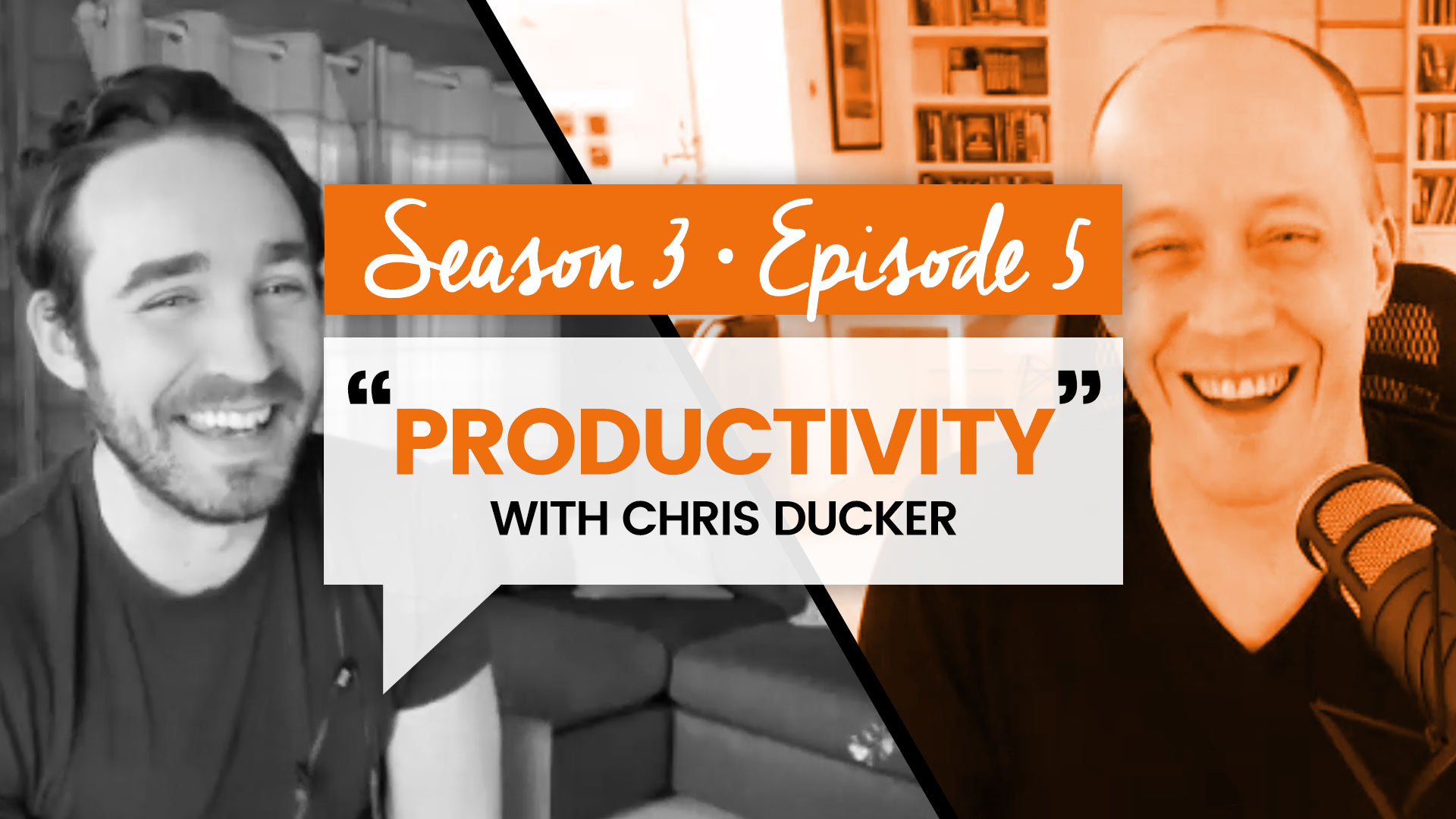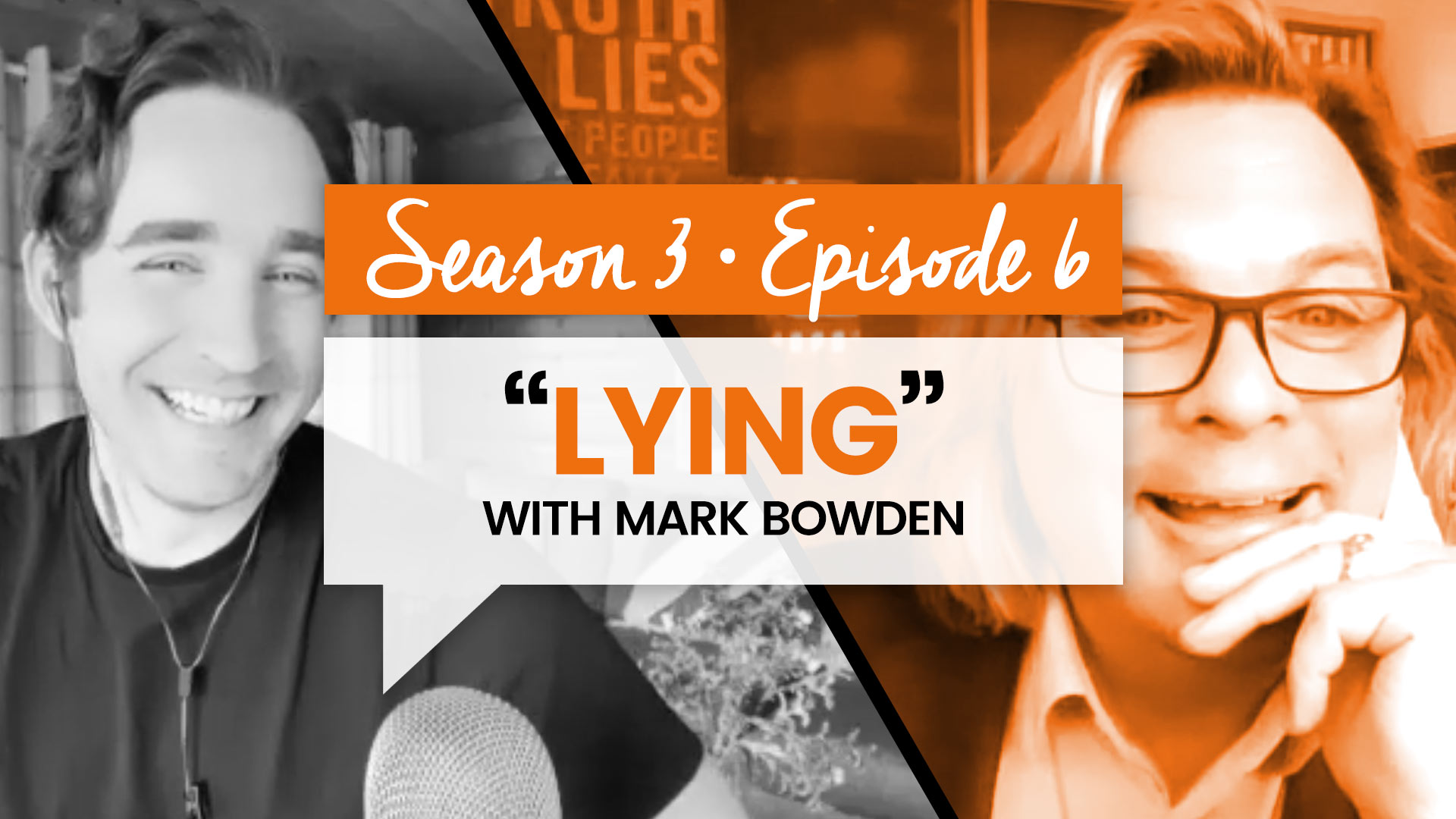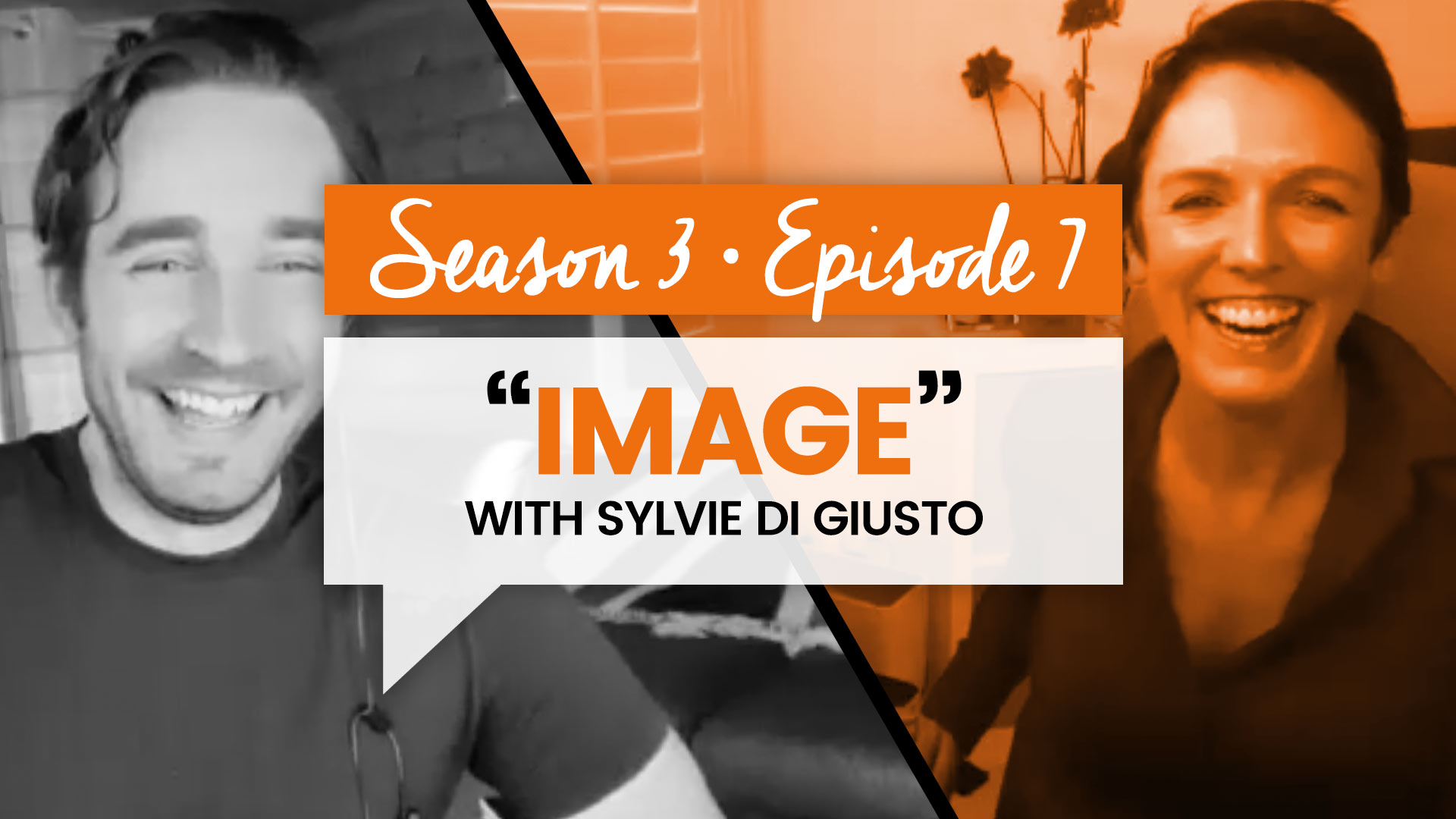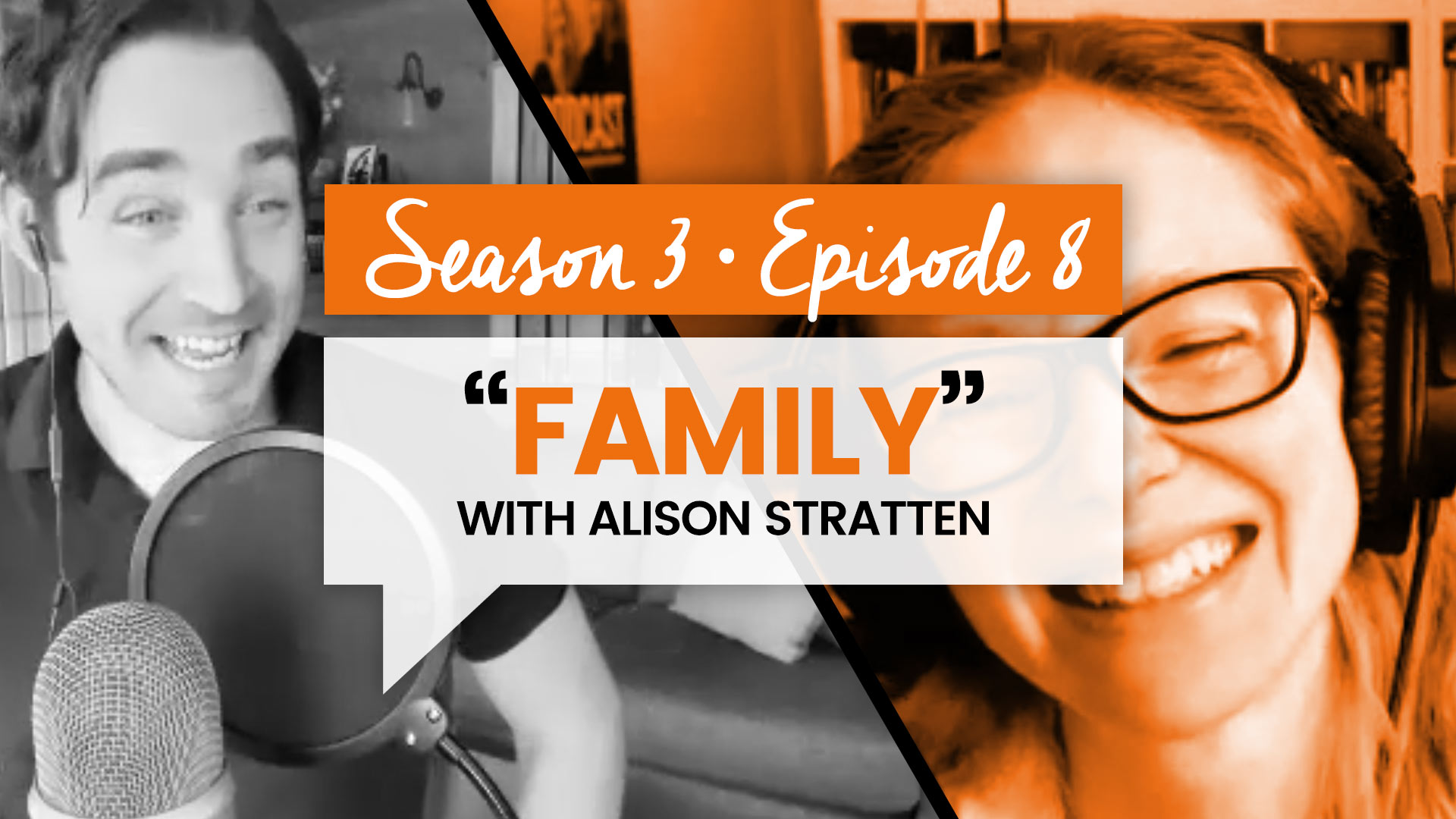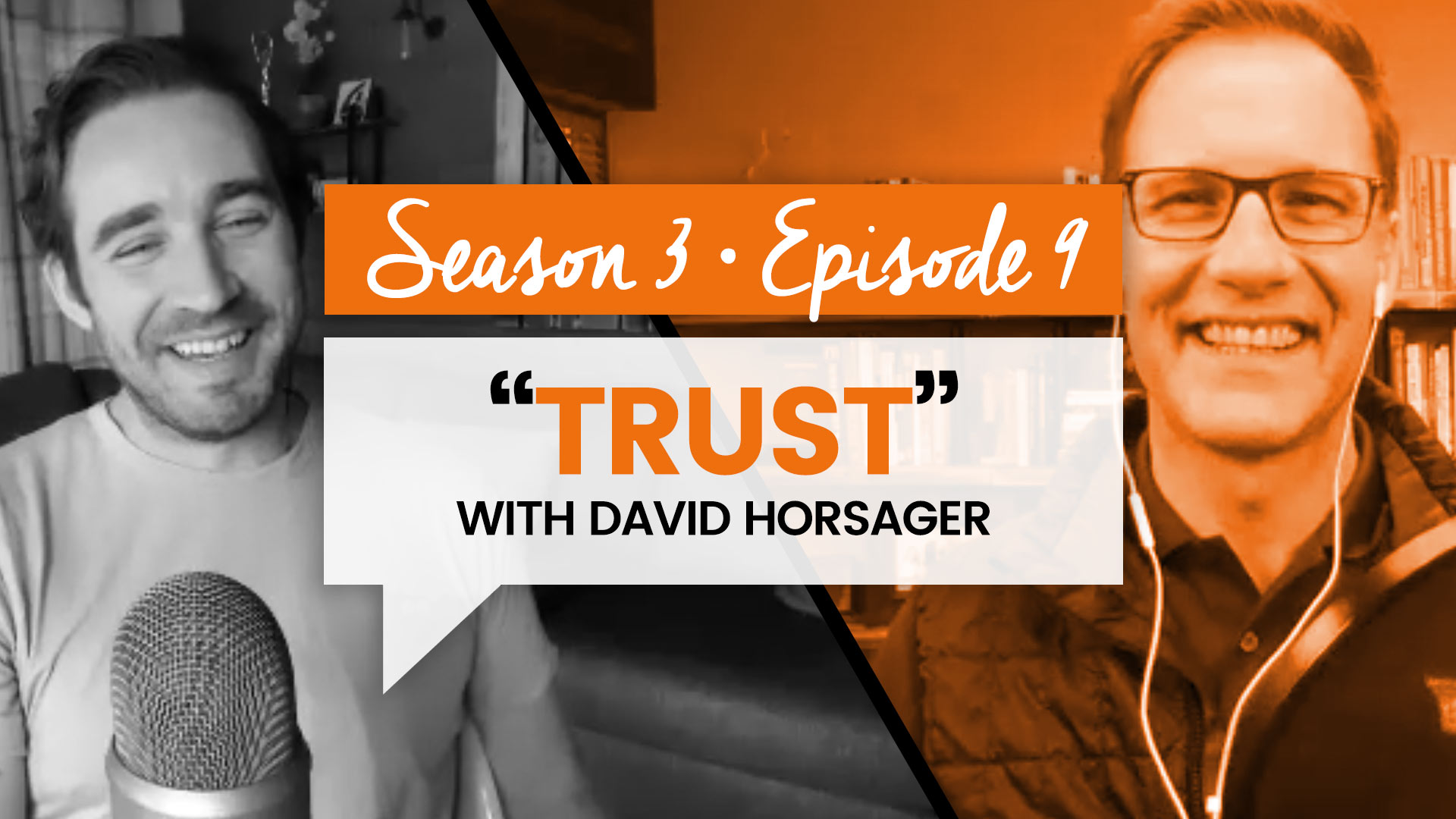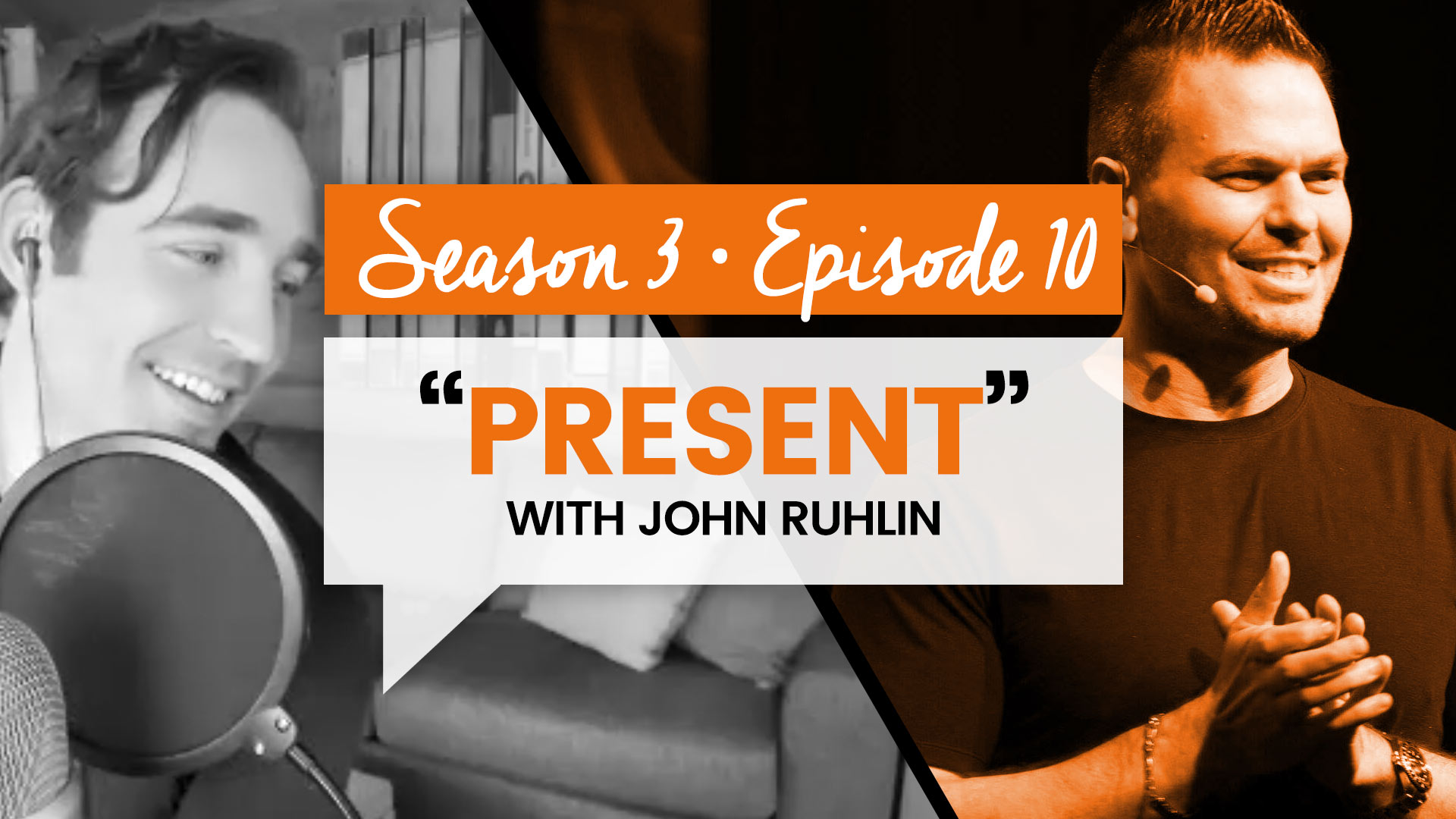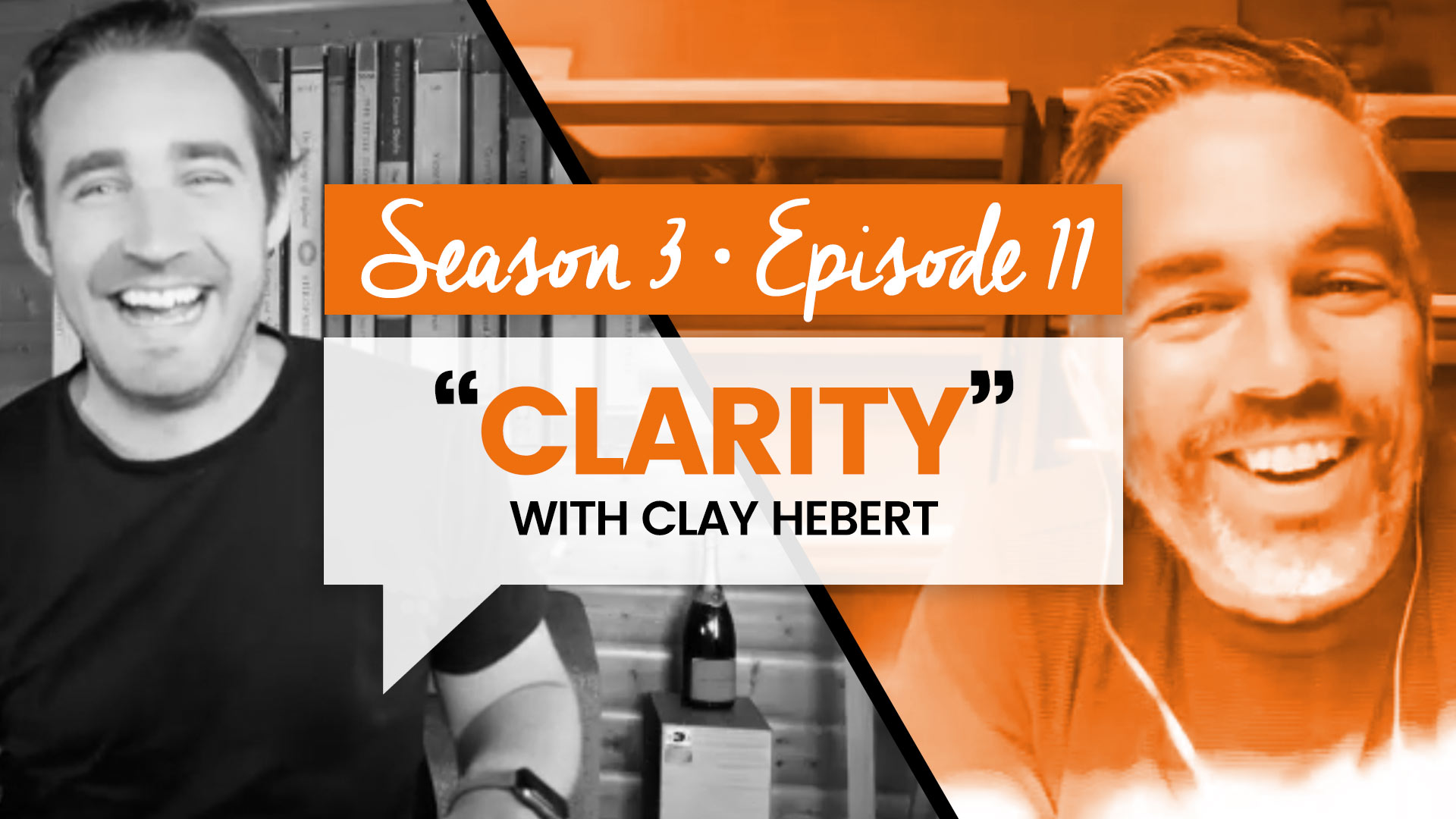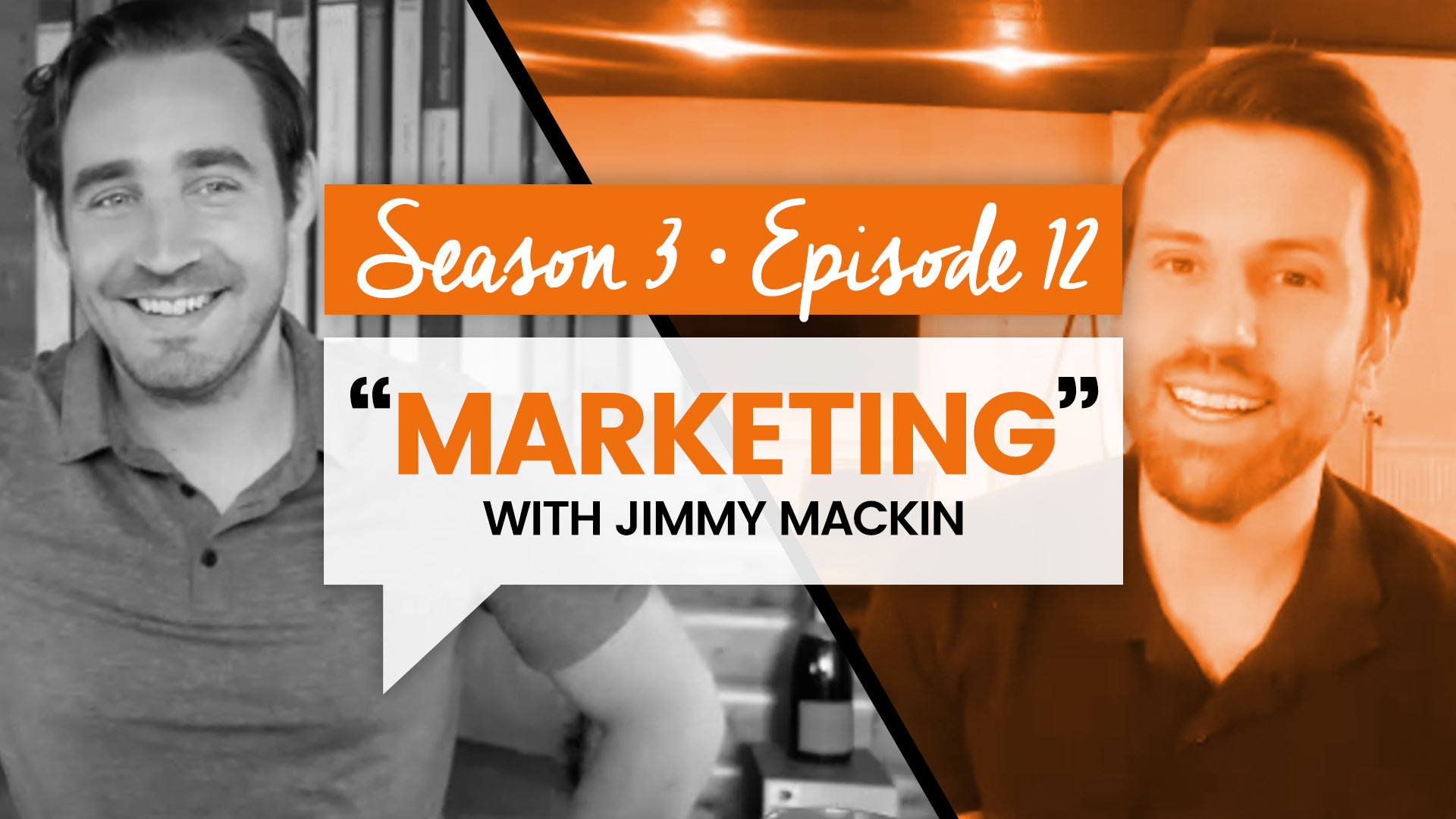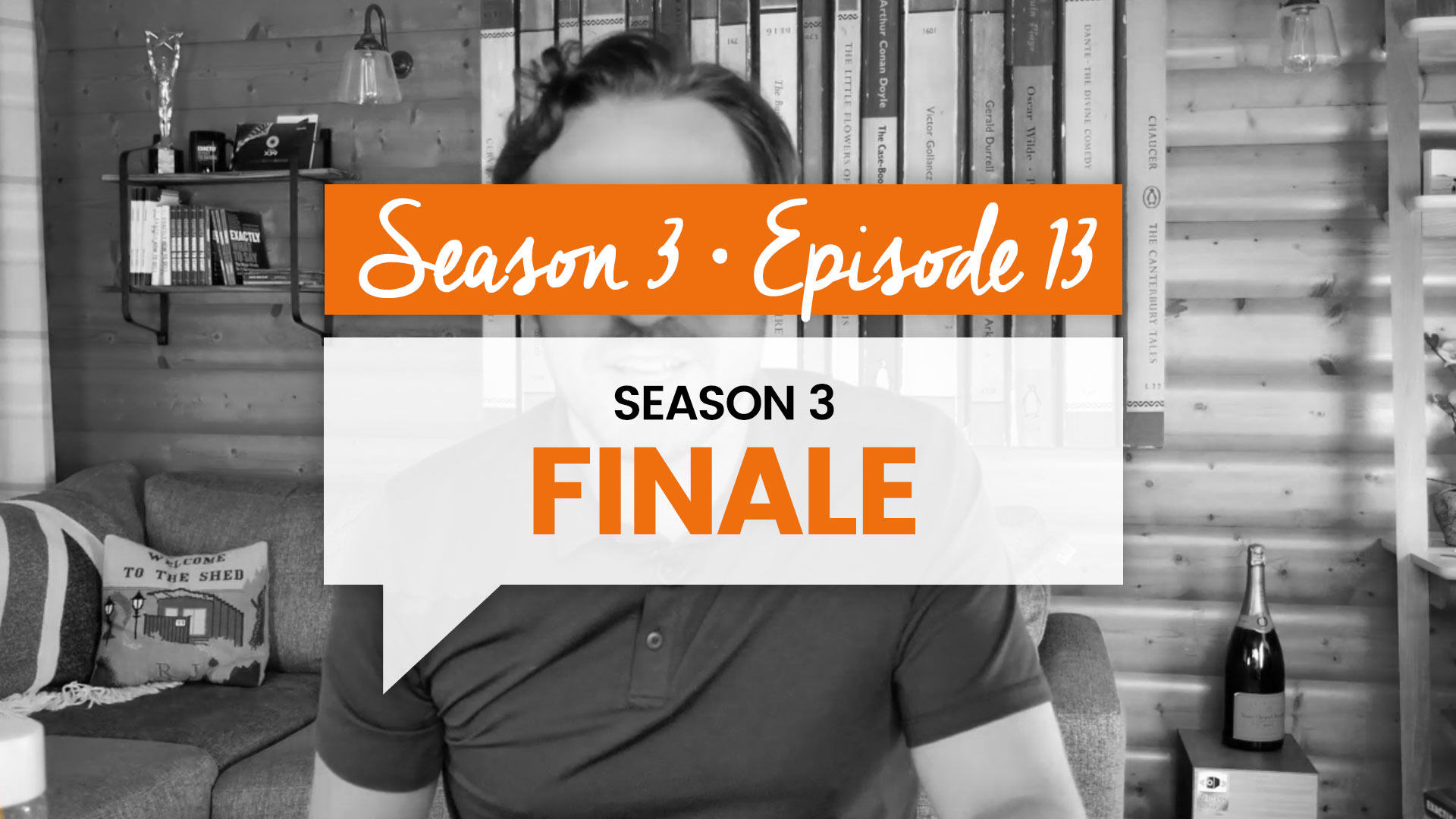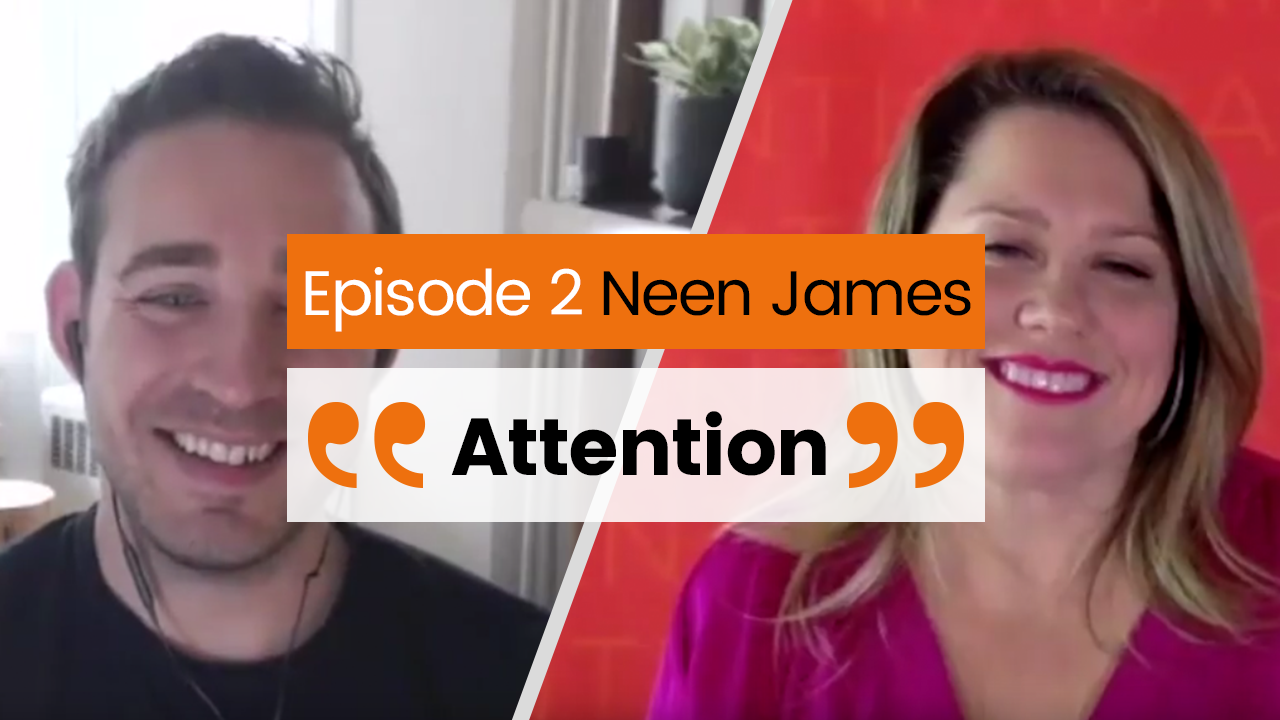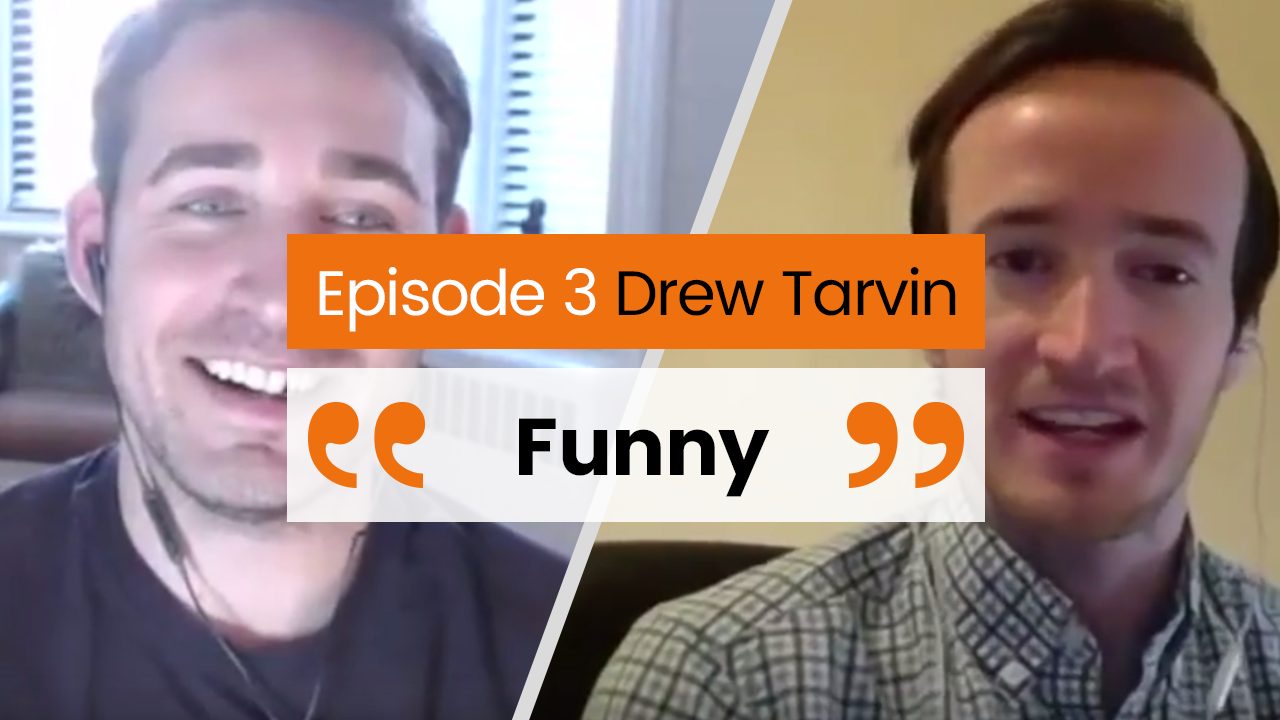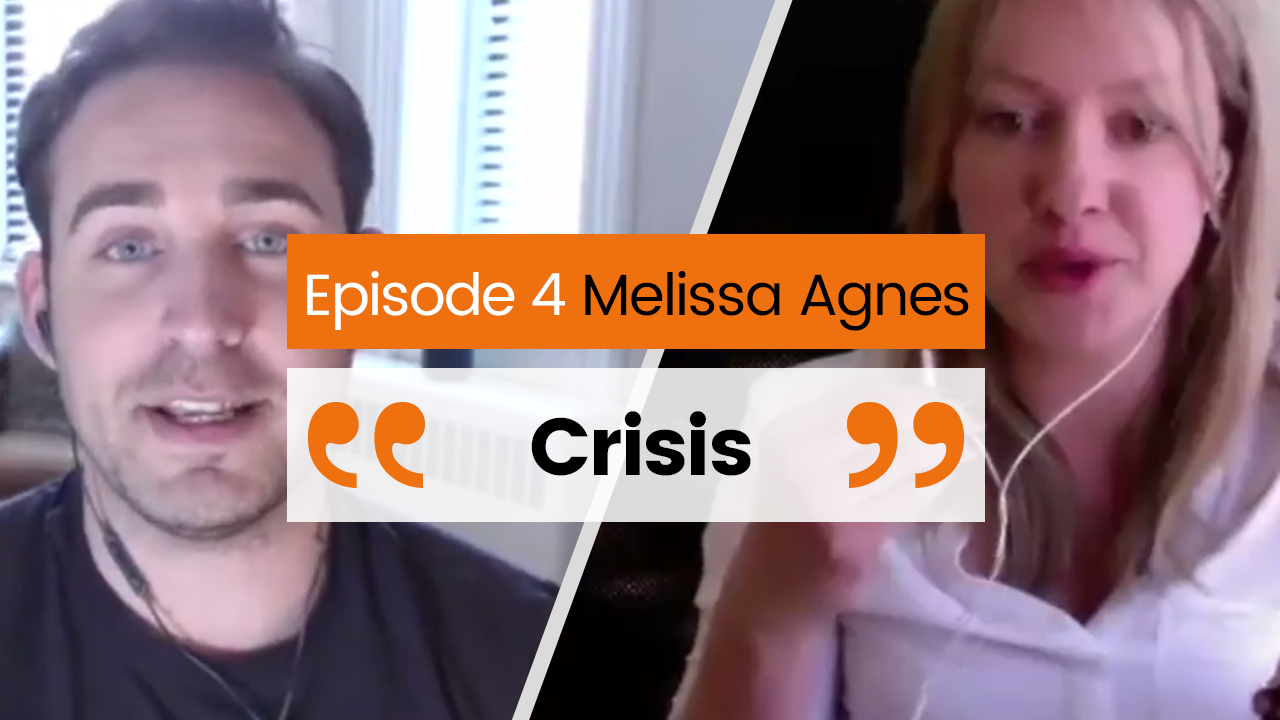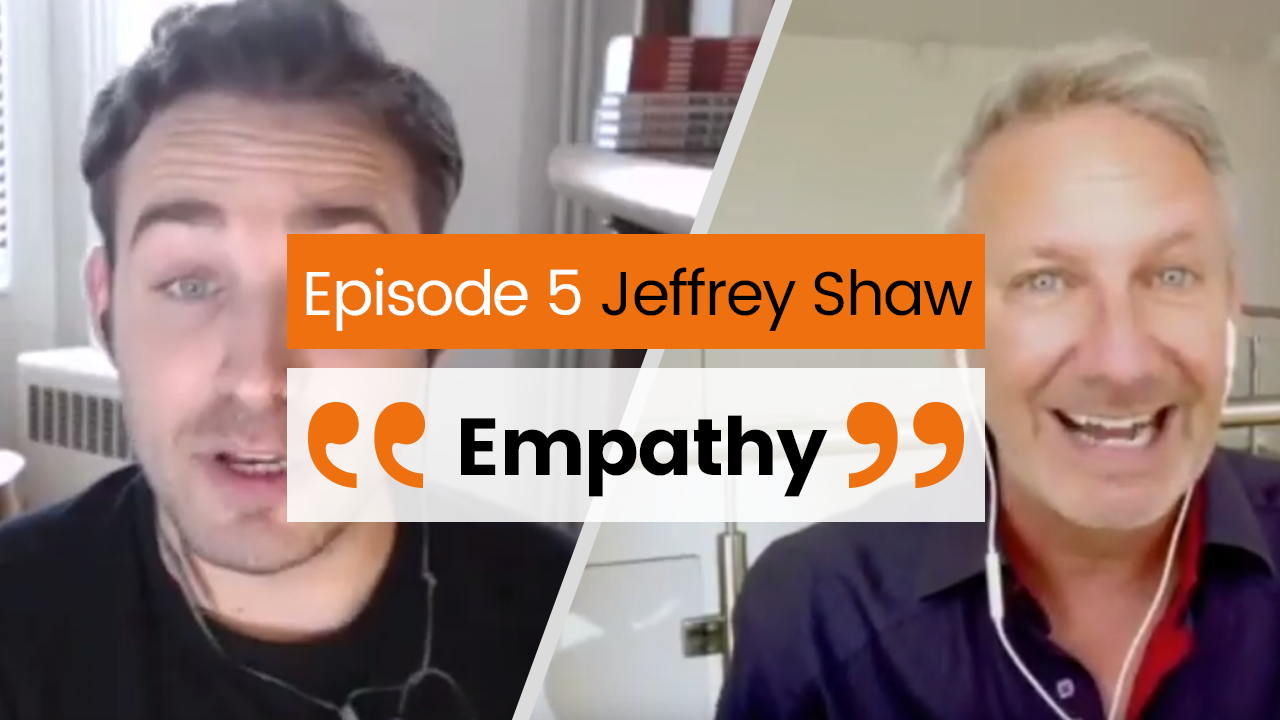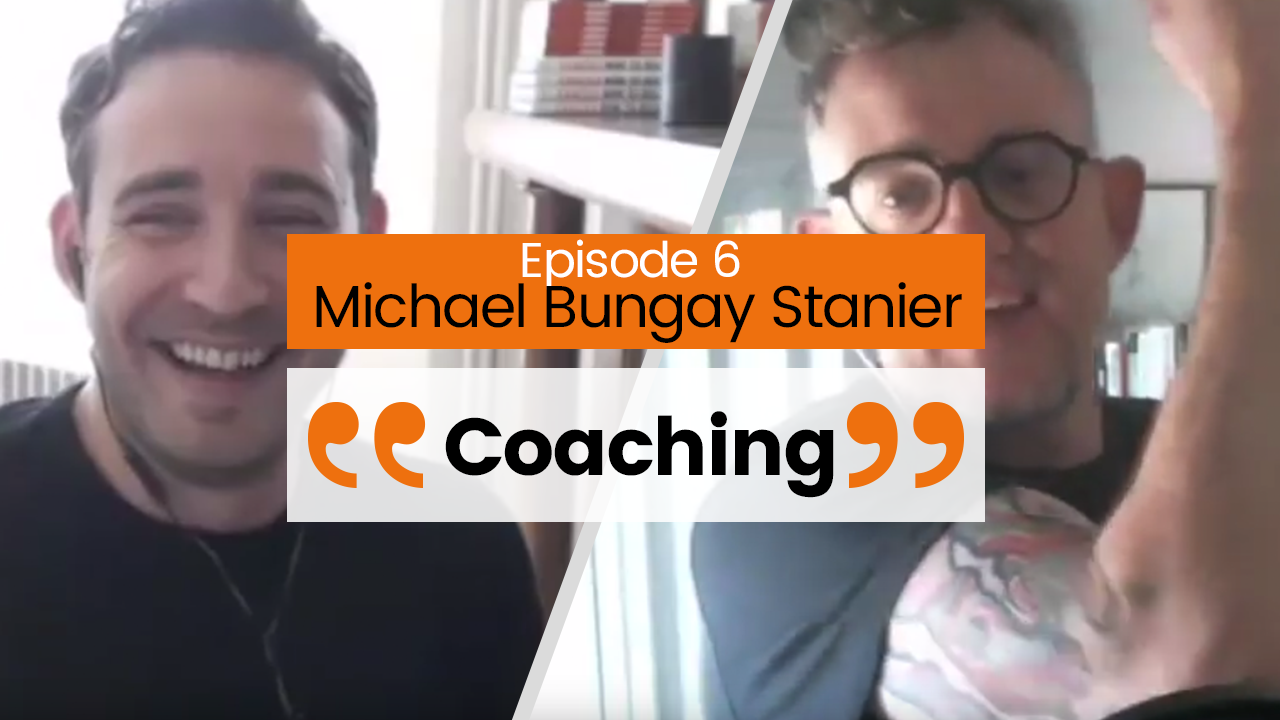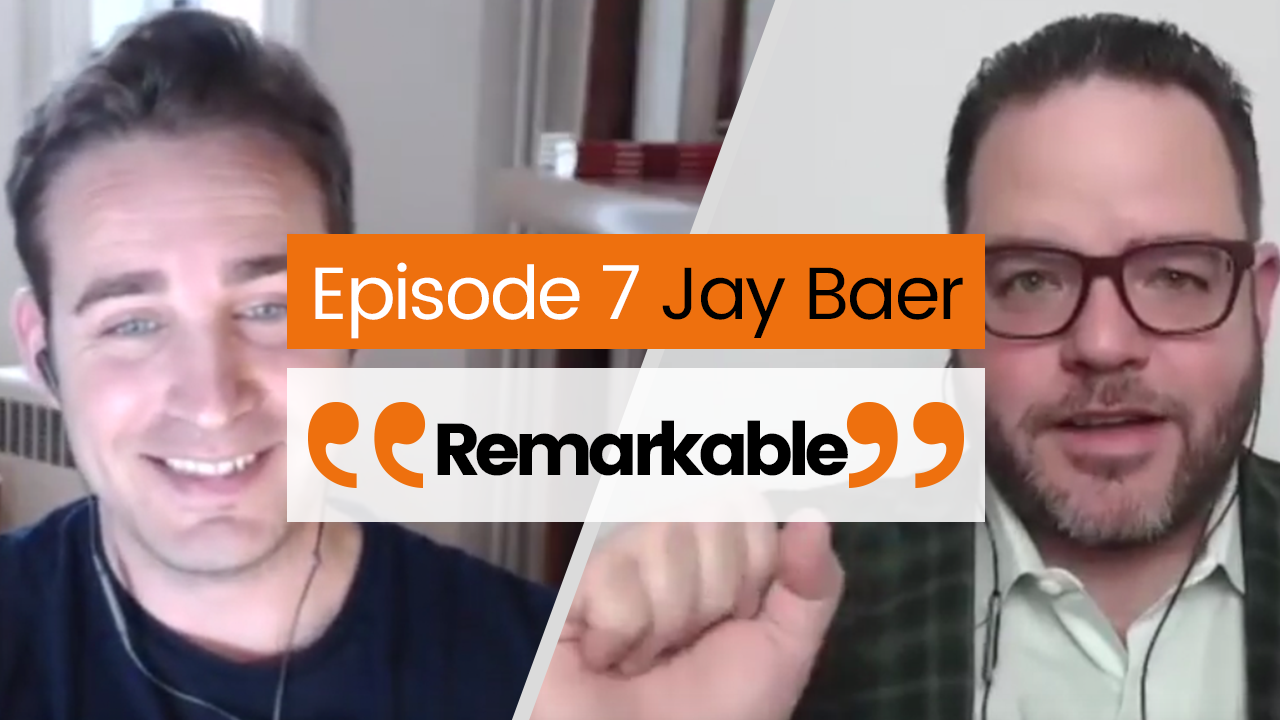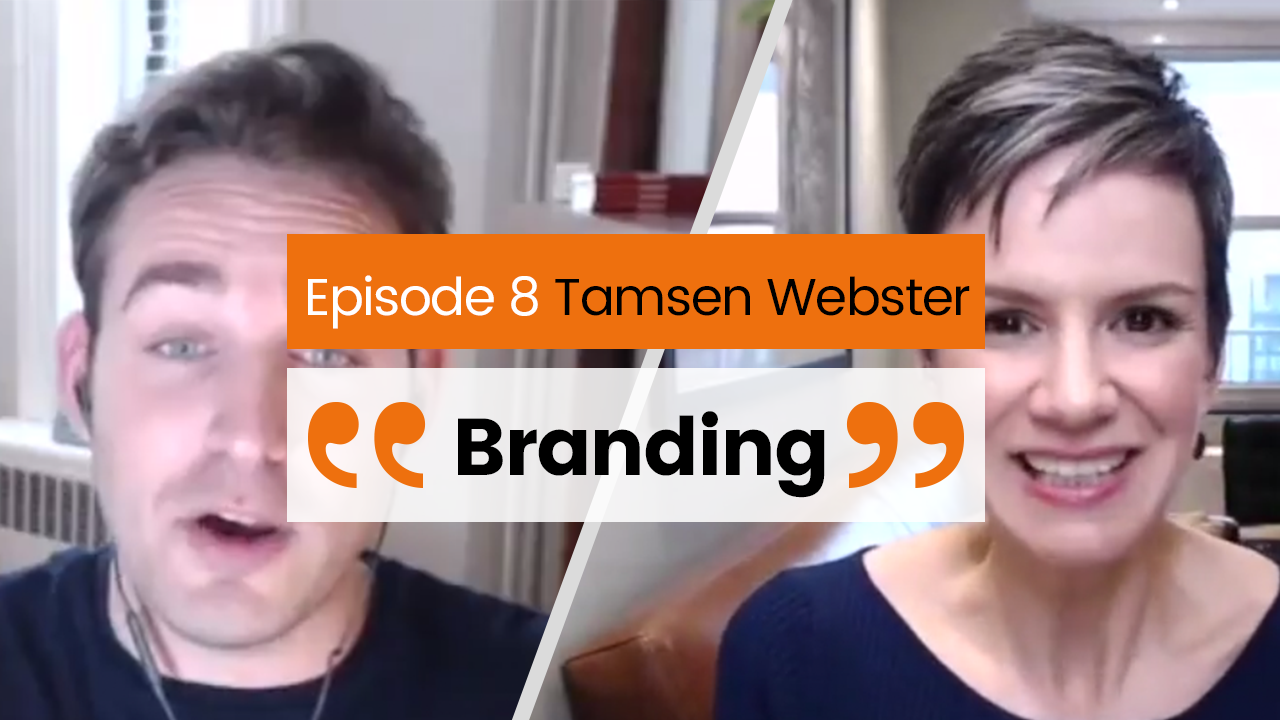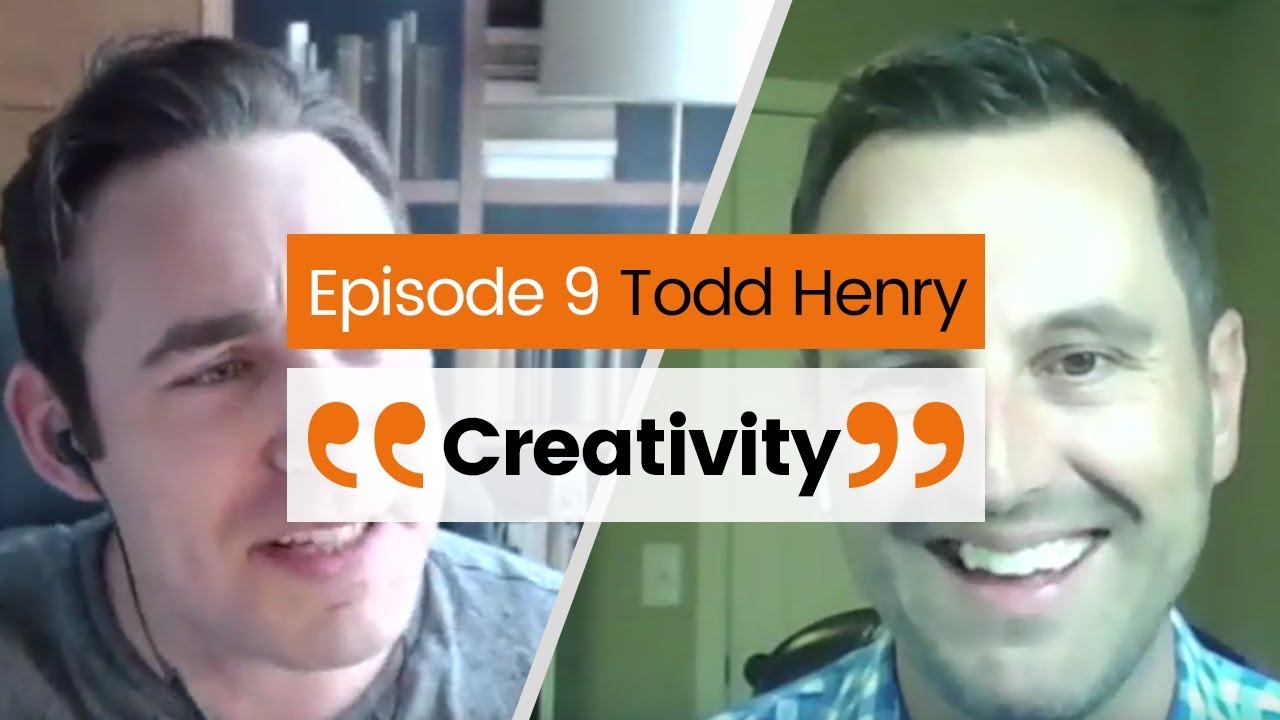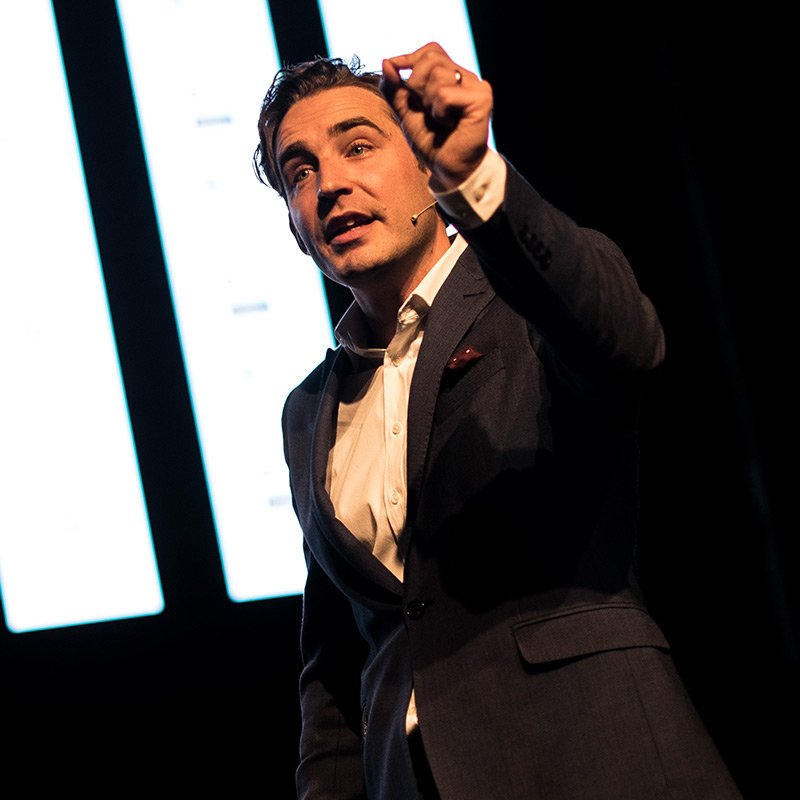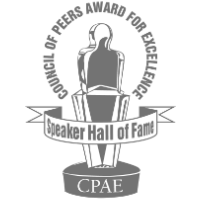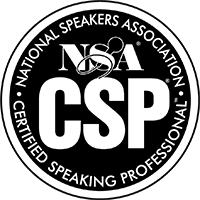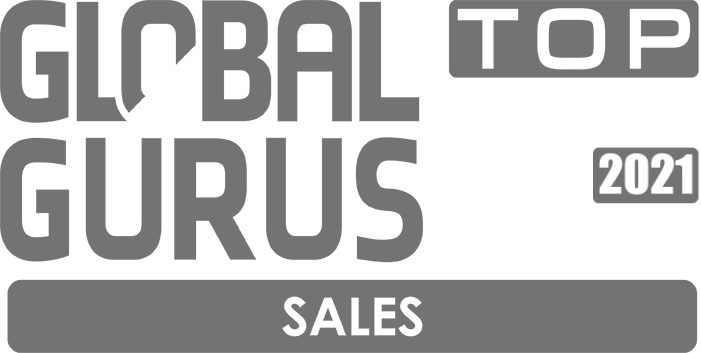Todd Henry: Creativity
The fantastic Todd Henry shares his insight into the word “Creativity”. Listen in on our conversation and enjoy the learning from being a fly on the wall to our discussion.
Resources
Find out more about Todd Henry here:
- Website: www.toddhenry.com
- Todd Henry on Amazon
- Twitter: @ToddHenry
- Todd Henry on LinkedIn
The full transcript
Phil Jones: Hello, and welcome to this next edition of “Words with Friends”. This is where I talk about a word, with a friend. It really is that kind of simple. And today’s word of choice is the word “creative”.
To help me understand more about the word “creative”, help you understand more about the word “creative”, we have somebody who knows a lot about the word “creative”. So today we have Todd Henry.
Hey, Todd, welcome!
Todd Henry: Hey, thanks, Phil. It’s great to be here.
Phil Jones: And I say Todd knows a little bit about being creative, I mean he did everything from write the book about “The Accidental Creative” to a number of pieces in between, including write a book called “Die Empty”, a book called “Louder than Words”. He is a friend, and most recently, he wrote a book called “Herding Tigers” which is about leading and managing creative people.
So, I think you might know a little bit about the word “creative”, Todd. Would that be fair?
Todd Henry: I think that’s fair, although I feel like you’re going to put me on the spot. Yeah, I feel like that’s fair.
Phil Jones: I might put you on the spot. I can’t promise to not do that. But hit me with this: what does it mean to be creative? It’s a word that’s thrown around. What does that mean?
Todd Henry: Yeah, there are a number of ways we can define “creativity”. I like to define creativity as problem solving. I think we tend to conflate creativity and art. People tend to think, “Oh, I’m not creative.” I hear this all the time in the marketplace, “Oh, I’m not creative.” What they really means is, “Oh, I don’t design. I don’t make artwork. I’m not a musician.” And so they think, “Well, I’m not creative.”
I think what’s happening there is they’re conflating creativity, which is problem solving at the heart of it, with art. So an artist (a designer, a writer, a musician) solves a problem by creating a piece of art. That’s what they do. That is a creative act. But it’s an artistic creative act.
But, an entrepreneur, an accountant, a sales manager, has to be creative by solving a problem. Like, for example, “Oh, this customer has an issue. We have to figure out some system to help deliver value for this issue our customer’s experiencing.” That’s a creative act. We often don’t believe that, I think, as humans who are trained to think that the creativity is the domain of these other special people over here, the “creatives”, as we call them, right? But the reality is we all have to be creative as a function of our job because we have to solve problems.
Which means, by the way, that we’re all prone to all the same issues, dynamics, struggles, insecurities that a lot of the typical creatives are prone to. It’s just that maybe we haven’t been given the tools to be able to deal with that.
Phil Jones: Okay. Now, I was in a conversation the other day listening to a parent talking about their two kids. And when they were talking about their two kids, one of the things they said is, “Oh, he’s the creative one, and she’s the go-getter.” And that to me threw out this weird set of thoughts where I went spiraling around going, “What does it mean to be creative? And can you have one without the other?” It seems unusual to me, but particularly we like to label people. That you can’t be creative without being ambitious and driven, and if you’re ambitious and driven, you can’t necessarily be creative. What’s your thoughts in and around that?
Todd Henry: I think that is an unfortunate stereotype that we have about creative people. There are a number of myths…by the way, when I say “creative people” again, I’m referring to anybody who has to go to work and solve problems everyday, right? But I think there are some myths that we have about what it means to be a creative person: Creative people are undisciplined; if you are a driven disciplined person, then you’re not a creative, because creatives are people who sit around in their loft all day dreaming up possibilities for whatever.
That is just unfortunate and untrue. Many of the extremely brilliant, creative, innovative, wildly imaginative people I think are all also driven. They pair that with an ambition, an understanding of how to get things done. Maybe not always completely skilled in operations, but they understand how to solve that problem and find people that can pair that ambition with in order to accomplish what they want.
So, I think there are a number of myths that we hold about what it means to be a creative, and it grieves me to hear that experience of the parents who are laying that on their children, because you know that those narratives then begin to define how we see ourselves in the world. “Oh, okay. Well, the domain of creativity just isn’t for me because I have ambition.” What does that mean? It doesn’t really seem to resonate at all with anything that I’ve experienced.
Now, I think also, on the flip side, maybe some of those narratives that we feed to our children or we feed people in school also effect the people who tend to skew toward being more imaginative, being able to make those non-intuitive loose connections. Which is often, when we say, “Oh, that’s a highly creative thing,” what we really mean is “Oh, it’s familiar, but it’s not intuitive. It’s a connection that I wouldn’t have made.” That’s an intuitive leap that maybe you can get to that I can’t quite get to. That could be because of your domain expertise, that could be because of a special ability that you have to be able to think systemically in a way that I can’t think systemically. So, that’s always a possibility.
But I think what we do when we layer those things on to people who make those non-intuitive leaps is we tell them, “You don’t have to be disciplined because you’re a creative type. Just go do your thing. Just go sit in your room.” That’s unfortunate as well because as you and I both know, in order to get anything done in this world, you have to have some operational understanding. What does it take to execute your idea? A lot of people unfortunately have the ability to generate ideas, but they don’t really necessarily have the ambition, drive or skill to be able to execute it, which is unfortunate.
Phil Jones: Okay. In the world of business, one thing that happens a lot is people say things like, “I’m going to put that across to the creative department,” right? So, this other department to be able to do all things creative. It becomes real easy to abdicate any personal responsibility to anything that may well be creative. And the result of which often, through my experience, is we give bad briefs to other people in order to be able to do things, or zero briefs whatsoever, through the abdication of the responsibility of creativity. What’s your experience around that?
Todd Henry: Yeah, that’s an unfortunate dynamic as well. I think “abdication” is a great word because what we’re doing basically is we’re passing off responsibility for thinking strategically about the outcome to people that we deem as creative. The reality is, creative people needs rails. There’s a myth about creative people that they just want complete freedom, “don’t fence me in, just give me wide open spaces.”
That’s not helpful to the creative process. Orson Wells, the great film maker said that “the absence of limitation is the enemy of art.” We need to have some bounding arcs, some limitation to our creative process to enable us to be able to channel our focus, our assets, our time and our energy into the work that we’re doing. Without that limitation, without that bounding arc, then a lot of people will just wash out on the plain, because they don’t know where to spend their finite energy.
So when a manager says, “Well, let’s just let the creatives handle that”, and there’s not really a specific breed, there’s no real strategic direction, it’s just, “Figure it out.” Not helpful. Not helpful at all. So we need to understand the creative process is a give and take between strategy and ideation, and then obviously execution in the back end of it. But you need to have that bounded arc of a clear strategy, clear expectations, in order to set creative people up for the work that they’re doing.
I call this the importance of stability. There are really two kinds of things that creative people need more than anything in order to thrive. The first is stability. And stability is that bounding arc: clear expectations, clear strategy, a clear understanding of where I should spend my finite resources. It’s critically, critically important for creative people to be able to thrive.
Phil Jones: So how do I take that kind of concept, which I believe to be true, and apply that to me? We have problems that exist in my business, problems that exist in my life. How do I create those boundaries or frameworks to be able to perhaps encourage more of that problem solving thought?
Todd Henry: Well, I think if we define creativity as problem solving, which we have I believe, then the first step is to define the problem. I think sometimes we attack projects, we attack concepts, but we aren’t attacking specific problems.
So the very first step to generating ideas around anything that you’re trying to solve is to step back and ask, “What are we really trying to do here? What is the real problem that we’re solving?” Not, “What’s the project that we’re attacking?”. Not “What is the outcome that we hope to achieve right at the end.” But, “What is the problem that’s standing between us and that outcome?”
The more specific you can get in defining that problem, and the closer to the metal you can get to defining the problem, the easier it’s going to be to begin to make traction on solving that problem. I’ve encountered, as I’m sure you have as well, Phil, I’ve worked with organizations and they’ll tell me, “We’re just stuck. We’re stuck in a rut. We can’t figure out how to get out of this rut.”
And when I really dig into it I find out that there are five people on the team, and every person on the team is trying to solve a different problem. Because they’ve never stepped back to talk about “What are we really trying to do here?” There’s an assumptive rut that we often find ourselves in. Maybe because of domain expertise, we’ve been doing this for a while. We all assume everyone else is on the same page because we’ve been working together for so long. We’re using common language, so because we’re using common language, we think that those words mean the same thing. I mean, “This is your area of expertise, right?”
We can use the same word and mean very different things by that word. So we have to make certain that we are defining our terms the same way that we’re defining the problems the same way, and that we’re all on the same page, that we’re all moving in the same direction. It begins by defining the problem specifically and precisely so that we can begin to attack the same thing together.
Phil Jones: Okay. So it starts with defining the problem and then outside of that, once I’ve got clarity and definition of exactly what it is that is the mission critical thing that we’re working on, I guess that we then need to apply some boundaries to that in some way, right? It’s to able to say, “How to we ring fence this in a way?” Is that right in what I’m saying there? Are we talking about the fact that we might need to put either time bound constraints on it, or financial constraints on it, and say that, “We want the best we can do to solve this problem in this time scale for this level of expense”?
Todd Henry: That’s exactly right. I think at the heart of it what you’re saying there is, “We need to answer the question: how will we know when we’re finished? How will we know when we’ve accomplished? How will we know when we solve this problem?”. There are financial constraints, there are time constraints, there are client expectation constraints, there’s typically some kind of creative breed for some kind of strategy breed that we’re trying to satisfy.
All of those things provide the boundaries within which we must work. So, “How will we know when we’ve succeeded?” Again, and I’m sure you’ve experienced this as I have, we don’t answer that question sometimes. So what happens?: we keep working until we run out of time, until we run out of money, project bleeds into project. “We could have been finished three weeks ago, but it doesn’t matter because we still have three weeks left, so we’re going to keep working and tweaking and perfecting to get that final .02% out of the project.”
Well, that’s not very helpful, and it actually leads to an unhealthy culture of overwork and what Scott Belsky calls “insecurity work”. We’re working towards something, not because we really think we’re making progress, but because we’re afraid we’re not doing enough to satisfy the objective.
So, defining the problem and defining how we will know when we’ve accomplished what we set out to accomplish, is really important. So those provide the beginning and end boundary marks for the work. Then the strategy brief, creative brief, client objectives, all of those things, organizational objectives, those provide the lateral bounding arc for the work that you’re doing.
Phil Jones: Help me understand this in the simplest of layman’s terms. Let’s say that the creative project in hand is a child in your life needs a birthday cake. That’s the creative project. How do we work through that? What would we be applying to bring some Todd Henry brilliance to be creative around the deliverables on that project? What might that look like?
Todd Henry: Well, you have time constraints, right: do I physically have the time to make this cake myself? While that might seem like a more personal approach, maybe my child will appreciate that if I make it myself because it’s something I did for them. I have time constraints. I have a job. I have other obligations. So, can I physically do this? That’s a time constraint I have. When is the birthday party? Is it in three weeks or is it at 5:00 PM at the end of the workday? That’s another time constraint.
There are resource constraints: how much can I afford to spend in order to accomplish this project?
And then there are expectations that we have. So in my dream world of worlds, what would be the thing that would absolutely blow my child’s mind? (My children are older, so I have no idea what kids like these days.) But, maybe it’s like building a multi-tiered giant room-sized cake out of which pops their favorite television character? That would be amazing, but we have some resource constraints; we can’t afford to do that. So what can we afford to do?
This is a phrase that comes up a lot in the world of industrial design (it sort of became a design ethic over the course of the twentieth century) is this idea of: most advanced, yet acceptable. So what is the idea that is going to be the most advanced idea that we can come up with, but also is acceptable because it’s not so far out of bounds that it’s going to stretch us resource-wise, expectations-wise?
I recently listened to a book called “The Hit Makers” which is about: what is it that causes things to catch on in the world of scarce attention? In the book, the author was arguing that there’s a tremendous amount of research that shows that we think people love brilliant, novel ideas, things that are wild and creative. But that’s not actually reality. Reality is that we like things that tend to be just novel enough that push us and stretch us, but still familiar enough that we have some grid for them.
I would say, to get back to the birthday cake, sorry, my non-sequitur…
Phil Jones: I’m making it tough for you to talk about birthday cakes.
Todd Henry: To get back to the birthday cake, I think that we’re looking for something that will surprise our child that will make them feel special and valued (that’s our objective), and yet fits within the bounds of our constraints whether that be time, resources, focus, all of those things. I think that’s the bounding arc of the project.
Phil Jones: Okay. Now back to this whole point of application again. I guess one of the things I see happen a lot that I’d like your take on is the involving of other people towards the creation of the creative outcome before you’re ready to be able to involve other people. So what happens is, is we start having other people’s ideas talk into something before you’ve got clarity of the brief. I see it with logo designs, slide design, website design. I see it with so many different areas where people are looking to outsource something to somebody else. It’s like, “Hey, I want a new video for my business,” but they haven’t gone through any of the ability to be able to create a proper creative brief first.
What would be your advice to people before engaging with somebody to be able to lead forward with a creative project?
Todd Henry: Yeah, at that point you have to have to hit the brakes very quickly and say, “I know that’s what you’re asking for, that’s why you’re coming to us (because you saw someone else’s video and you thought ‘we need one of those’), but hold on. That was an execution designed to solve a very specific problem for the business. Maybe there’s some other execution that will be not only more effective for you, but might even be more cost-effective for you. So let’s take a step back and talk about what are you really trying to do: ‘I’m trying to get new clients; I’m trying to raise awareness for a project; I’m just trying to build my brand in some capacity.’ Great! Wonderful! Let’s talk about all of the potential executions that we could do in order to accomplish this specific strategy or this specific outcome that you’re trying to achieve. The problem that you’re trying to solve.”
Rather than, “Okay, great. Let’s talk about what kind of video you want.” There are many companies who are more than willing to just take your money and make a video, and not even ask you questions. But I don’t think that’s really serving the client. I think if you want to serve the client you have to be brave enough to tell the client, “Listen, I would love to take your money, but I’m not going to. First, I’m going to step back and ask you, ‘What are you trying to do?’”
I’m certain that you do this with the work that you do. I do this very often with clients that approach me. I have told them (significant projects, tremendous amounts of revenue), and I’ll say, “Hold on. I’m not 100% sure I’m the right person for you. Let’s talk about this first. What are you trying to accomplish?” And there are many times when I’ve said, “Actually, that’s not really in my sweet spot. That’s not really what I do. But I’m happy to make referrals to people who can solve that problem for you.”
And as you know, often people will say, “Hold hold on. Hold on. Hold on. Let’s talk about what you do and how can you solve…” You know what I mean? When you do that they tend to say, “No, we want to work with you.”
But I think you have to be willing to step back and say, “Hold on. Let’s not begin with execution because beginning with execution will lead you astray.” You have to begin with “What is the problem we’re solving?” Again, if you define the problem specifically, and then we can begin to think execution toward outcome, but we have to begin with defining that problem, making sure that we’re not starting with execution.
Phil Jones: Let’s try and simplify this for people listening in right now. One of the things I see a lot, particularly with creative resource now being available, largely to small business owners, through things like freelance networks (like PeoplePerHour or EnoughWork) this kind of ability to get straight towards a creative practitioner, so to speak, is what happens now, is that consultation process that would have often happened that if you engaged with an agency. For example, to be able to deliver on a project for the business, you would get the answers to these questions, but that doesn’t happen so much so.
I was speaking to a mutual friend of ours (I won’t mention by name) yesterday, that shows me an infographic that they’ve created, and asks me the worst question in the world which is: “What do you think?” Now, when somebody asks me that question, I feel obligated to answer the question I was posed.
Todd Henry: Of course.
Phil Jones: And my first question is, “What do you want this to do? And what do you want other people to think when they see it?” I ask those kind of questions back and I realize that although it was a prettily produced infographic, it didn’t of a good job or all of the jobs that this given individual would would have liked to have done.
So how do we help maybe the small business owner that doesn’t have a creative team, but needs creative resources and is going to build maybe an outsourced creative team, to answer a series of questions ahead of time before engaging with a creative professional? What sort of things might they want to think about first, if we were to try and help them be more effective in that process?
Todd Henry: Yeah, I think there are a couple of things. First of all, you have to think about: “Where am I stuck? Where do I feel stuck right now? What are the oppressive forces that are coming against me accomplishing the objectives that I have for my life and my business?” Because the sticking points I think are often symptomatic of deeper issues that have to be addressed before you go hiring people to solve a problem. You have to first ask, “Why do I feel the need to go out and hire people?” What is going on” Is it lack of revenue? Is it lack of awareness? Is it, “I don’t have a brand that I feel proud of”? Is it that “My website is not converting”?
Okay, great. These are specific problems. These are places that I feel stuck rather than just going out and hiring somebody and saying, “Please fix my business.” Nobody would do that, but that’s …
Phil Jones: Nobody would do that, but everybody does it.
Todd Henry: Right. But, I sound like a broken record here (not that people even know what a record is…well, they do now), you have to go back to defining the problem. What’s the specific problem set that I’m trying to solve for here before you start thinking about hiring anybody for anything. Then you have to think, “Okay…” I love that the way Ray Dalio in the book Principles talks about this. (I don’t know if you’ve had the chance to read the book, yet.)
Phil Jones: It’s a great one.
Todd Henry: It’s phenomenal. It’s funny because several years ago, he put it out as a PDF, and I was shouting from the rooftops about this PDF. Then they published it as a hardcover (which is great because I can give it to people, it’s phenomenal). But he talks about building the machine. So you have an outcome you want to achieve, you have a problem that you’re trying to solve, and you have the place where you are and all of the identifiable problems that you encounter right now. And your job as a business owner, or as a leader of a team, or whatever, is to build a machine that will help you solve the problems that you’re facing and help achieve the outcome that you want to accomplish.
So, once you’ve defined those problems very specifically, your only job is to say, “Okay, what kind of machine do I need to build in order to be able to accomplish this objective?” Which means: Which moving pieces do I need to put in place? Do I need a strategist? Do I need a web designer? Do I need somebody to help me with SEO? Do I need somebody who can help me with my sales strategy; my go-to-market strategy for my product?
Whatever that is, at that point, you can account for, “Okay, here’s what I’m good at. I know what I bring to the table. But I know there are pieces of this machine that are not in place, and I need to hire for those pieces.” Which again, is a creative act. This is creativity in play, right. You’re solving for building this machine. That is a creative act in and of itself.
So I think again, to go back to where we started our conversation, creativity is problem-solving. You have to start with very specifically defining the challenges, the problems that you’re trying to solve so that you make sure you’re actually moving towards something meaningful and contributive, you’re not just building something because everybody else is building something. That’s not useful to anyone.
Phil Jones:
So, I guess listening to everything you’re saying there, is I’m hearing two big questions that almost tie much of this stuff together. I want to check this to see if we’re on the same page. One is: What problem am I looking to solve? That is the big headline here, that in any given scenario, before we do anything, we need clarity on the answer to that question.
Todd Henry: Correct.
Phil Jones: And then the second big question is: What does success look like?
Todd Henry: Right.
Phil Jones: A version of, “How do I know when I’ve got there? Where do I get to a position where this thing is finished?” Or, as I’ve just written it there is, “What does success look like?” So, if you can provide either yourself or then in turn somebody else you’re looking to help you on that mission with the answer to those two questions, then chances are what we might be able to do is be a touch more creative?
Todd Henry: That’s exactly right. The other thing I would add to that is that you need checkpoints in the midst of that process to make sure that you’re still defining success properly. Because as you iterate, as you learn, that definition of success might change. You might realize, “Oh, we’re actually now solving a different problem than we began solving”, right? I had a great interview with Adam Steltzner, who is head of the Jet Propulsion Laboratory Mar’s rover team. They landed the Curiosity Rover on the surface of Mars. They started out with the very simple question like basically, “How do you land the Curiosity Rover on the surface of Mars?” Their initial response was, “Well, we’ve always done it with parachutes and air bags. We just have parachutes that lower the whatever the vehicle to the surface, and then air bags deploy, and boom, boom, boom. Then it lands on the air bags, tumbles, then corrects itself, and it’s ready to go”
The problem was that Curiosity Rover was a little more delicate, a little more difficult to land than previous vehicles. So they had to ask the question, “How do we land this delicate piece of equipment?” Their first response was, “Well, bigger parachutes. Better air bags. Because that’s just what we’ve done before”. They realized, “Well, that’s actually not going to work.”
So as Adam described it, they had to stay in the dark room, the place of insecurity, the place of fear. “We see this deadline.” There’s only a limited window in which you can launch a vehicle to Mars: the planets have to be aligned properly, the distance…So they see this deadline approaching and they’re thinking, “We don’t have an idea. We’ve got to figure this out.” He said everything in them wanted to gravitate towards the first idea. Just the first thing that came to mind. And he said, “We couldn’t do that.”
So they started thinking about how people have transported other delicate pieces of equipment. They started thinking about grand pianos, right? So you live in New York, if you have a grand piano on the 30th floor of an apartment building, and it’s a delicate 300 year old piano that is irreplaceable, how are you going to move it? You’re probably not going to have movers throw it on their shoulders and haul it down the steps; it won’t fit, right? It’s a delicate piece of equipment. And they said, “We probably would use a crane, right? That’s what we would do. We would use a crane to do it.”
And they said, “Well, what of we created a kind of sky crane? Is there a way we could create a kind of sky crane to lower the Curiosity Rover?” And so that’s exactly what they ended up pursuing and inventing. They created this vehicle that would lower to the surface of the planet, it would fire rockets at a strategic point in time to hover in the air, and a crane would lower the Curiosity Rover to the surface of the planet. It’s amazing. Then the tether would cut and the landing vehicle would fly off. A remarkably innovative, creative solution. Unbelievable, right?
But the only reason they got there is because they were willing to stay in the dark room, to continue pushing out into those uncomfortable places, to be brave enough to say, “Okay, we have a potentially passable solution but it’s not the right solution. It doesn’t perfectly solve the problem that we’re trying to solve.”
They had defined the problem very specifically. So they were able to actually, “Okay this doesn’t perfectly solve the problem that we’re trying to solve,” to push out into those uncomfortable areas where brilliant intuition resides until they got to the idea that actually would solve the problem. The way they did it was by looking at parallel problems that had been solved, which is one of the tactics we can talk about is asking: how else have other people solved something similar to this? That’s how they eventually go to the solution that led to this brilliant, innovative landing vehicle.
Phil Jones: That’s a great, great example. It makes me want to ask you is: where are there other examples of perhaps you’ve seen brilliance of creativity in action? Or people that inspire you because of their continued example of brilliant, creative ideas?
Todd Henry: This is an overused example, but I’m going to use it anyway. (It’s overused for a reason.) I go back to the late 1990’s and Apple, and you think about when Steve Jobs came back to Apple. (By the way, is the sun coming through the window just absolutely blaring at you right now on my face?)
Phil Jones: You look a little beautiful, man, it’s like you’re becoming Godly in this moment. We’ve got to run with it. You talked about the planets colliding, we’re now talking about Steve Jobs. It’s like, “Whoooo, radiate! Run with it.”
Todd Henry: Good, good, good, because I can adjust the shades. All right, the sun just came up over the….yeah, anyway.
So, at that point, I forget how many SKUs Apple had, but it was ridiculous. They were like pop corning new products all the time. A bunch of different variations for every product. He came back and said, “Listen. In order to get to where we need to be, we have got to simplify our product line.” So they began slashing and burning products left and right. Firing product teams. Slashing and burning, cutting back to the bone. And basically drew a grid on the white board and said, “PRO- Consumer- Desktop- Laptop. These are the categories we’re going to focus on. Period. Everything else is done. Until we get these right, we’re not going to do anything else.”
That takes incredible bravery as a leader to do that because you know that those products are making money. You know that there are people dependent on those products. To be able to say, “I don’t care. It doesn’t matter. This might be the death of us, but in order to get to where we need to go, we need to retreat. We need to cut back, We need to go back to the most simple form of execution that we can think of, so that we can begin to build in a way that’s meaningful, and contributive, and consistent with what we want to be.”
I think a lot of organizations and leaders, Phil I’m sure that you encounter this as well, there is so much residue that has built up over time. Systems layer upon systems inside of organizations. Expectations layer upon expectations. I call these “ghost rules”. We have these ghost rules that exist in organizations about what is and what isn’t possible, that are based solely upon something somebody heard once from somebody who’s no longer at the organization. But they assume that this is forever and always going to be the truth because of this sort of invisible narrative that’s guiding their behavior.
So systems layer upon systems, expectations upon expectations, and we feel stuck because of the unnecessary complexity of our organization. Part of the defining the problem to be solved, the reason it’s an act of bravery, is because it often means, “We’re going to have to cut to the bone. We’re going to have to trim back some of these things that we’ve been doing. Even very good things, we have to trim back the good things so we can get to the great things. Because brilliance often happens in the white space. It happens when we have the room that we need to be able to breathe, to intuit, to connect dots that have previously been disconnected. And they way that happens is by greatly simplifying our life and our expectations and our business to the point where we can focus on the critical few so that we’re not instead allowing our energy to wash out in the pursuit of the non-critical many.
That is something that I often think about is: How can I simplify this? How can we eliminate unnecessary complexity, which only leads to dissonance within the organization, conflicting narratives, all of these things that over time prevent us from thinking creatively and contributively about the projects that we’re trying to engage in?
Phil Jones: Love that: brilliance happens in the white space. And what we’re looking to be able to narrow that gauge, right? We’re looking to able to see clarity again on that problem that we’re looking trying to solve.
Now, segue to a new direction. You wrote a book called Herding Tigers.
Todd Henry: Yes.
Phil Jones: Which would give me an indication that tigers are scary, but behind me in this video I have a tiger on my sofa …
Todd Henry: I noticed that. Thank you.
Phil Jones: So, did that especially just for you. But tigers aren’t scary things. I teach people how to lead sales people sometimes, and I’ve referred to the analogy “herding cats.” You’ve taken this one stage further. Even with the title on your book, without perhaps even announcing the fact that creative people are difficult to manage, is this true? Is this a myth? What should I take from that?
Todd Henry: Well, I think what I wanted to do was reclaim that saying of leading creative people is like “herding cats” because I’ve heard that over and over in my life. As a former creative director of an organization, having led dozens of people in trying to accomplish projects and what not, I’ve always hated that phrase, because what I feel like what you’re implying that creative people have short attention spans, that they’re only about the shiny new object, that if it’s not exciting and thrilling then they’re not going to be interested, and you have to constantly try to manage, “Okay, here’s what we’re going to do.” I find that to be a very demeaning way of thinking about highly-creative people.
So, I was actually giving a talk one day when the phrase just came out of my mouth. I said, “You probably heard it’s like herding cats. It’s actually more like herding tigers. These are powerful, majestic creatures who are capable of amazing, beautiful feats one moment, and capable of turning and ripping you to shreds if you don’t lead them properly.”
I think that’s true. The highly talented, creative people in your organization are the life blood of your organization. Your organization thrives on ideas. Without great ideas, your organization is not going to take new ground. You might protect the ground you’ve already taken, for a while, but you’re not going to take new ground. And if you’re not going to take new ground, if you’re not constantly looking at “What’s next? Where are we going next? What new ground are we going to take?”, eventually you’re organization is going to wither up and die. There’s simply too much competition in the marketplace.
So what I really wanted to try to communicate to people is, “Listen. You have to understand what it is that drives creative people and you have to strategically and individually lead the people on your team if you want them to produce their best work everyday. You can’t just manage them like a group, like a herd. You have to strategically and individually lead them in order to get the best work out of them everyday.
And every person is different by the way. What they need from you is different. There’s some commonalities, but you have to understand very specifically what is it that Phil needs from me as a manager in order to produce his best work. That might be different from what Tom needs, or what Jill needs, or what whoever needs. But you have to understand the people on your team and what makes them tick, and know the right balance of stability and challenge that provides them with the proving ground for their best work.
Phil Jones: So, strategically and individually, as I hear that, and I know one of the things that I know lots of people continually struggle with is, they don’t necessarily have a creative team that sits in a corner of their office. They’re not necessarily running groups full of creative people, but what they’ve done is just they’ve built this network of people to deliver those services to them. And often they flit and float between that network, looking for people to be very tactical on the delivery of jobs.
What you’re telling me here is that it may well be worth building long-term relationships and actually taking a very serious recruitment angle towards even those outsource resources you bring towards your organization so that you can strategically and individually give them more of the vision of what you’re looking to get achieved. Help them see the overview of the problems that you’re looking to solve, and have them be on the same page of what success looks like, that you might get more done and have more consistency and continuity through what you’re about.
Todd Henry: Absolutely. No question. How much time do you want to spend trying to identify and train and onboard new people for your team? That is such a time drain; it’s a time suck, especially for entrepreneurs. Anybody that’s working with outsourced talent…ask any consumer packaged goods company how often they want to have to switch agencies, and try to figure out, “How do we…we have to onboard them, they have to get to know our brand…this is is a relationship.”
So when you’re working with someone, when you’re hiring someone, it is a relationship, and you have to treat is as a relationship. If you were to find talented people and especially if you wanted to retain talented people to work with you, then you have to understand what makes them tick. Talented people have a lot of options. If they feel over challenged, but there’s no stability, (so if you’re constantly pushing them and challenging them with new work, and the terms of engagement are constantly shifting, and you’re always changing your mind, and there’s not any stability about your expectations, how you define problems and all that), they’re going to produce good work for a while, because they’re talented; they can do it on sheer talent alone. But eventually they’re going to seek better horizons. They’re going to start looking for other work. They don’t feel like you value them enough to give them a stable field on which to play.
Similarly, if you provide them with a tremendous amount of stability (“Hey, here’s exactly what I want. I’m going to tell you exactly what to do for me. Just produce this piece for me.” Like you said, “I want you to produce a video, and I’m going to tell you exactly what’s going to be in the video, and all you have to do is produce it.”) They’ll do it for you, and they’ll stay with you for a while, because you’re paying them, but they’re not going to want to work for you for long. If you’re inside of an organization those creatives are still stuck; they’re not challenged. They don’t feel like they’re being pushed to bring their best to the table everyday.
So again, it comes back to the question: How much time do you want to spend identifying, hiring and training these people for your team? Because if you say, “Hey, I have an infinite amount of resources.” Great. An infinite amount of time and resources, great. Fine. Burn through people, use them and abuse them, whatever you want to do that’s fine. But most organizations I know have finite resources. Most managers I know have finite resources. They don’t want to spend their time trying to identify who’s going to be working on the project; they want to be working on the project and providing value for their clients.
Phil Jones: What I love here is the more and more mad truth and mad-like advice that you’re dropping on, the more messiah-like you’re becoming in your appearance right now.
Todd Henry: Let me rectify that.
Phil Jones: I love it though, man. It was literally lighting you up, the more gems you were serving, it was like “Wooooo…”
Todd Henry: Kneel before me.
Phil Jones: So then as we start to bring this thing towards a close, is, if before listening to this, I told myself I was not a creative person, what steps do I take to become more creative … if that’s the way I am, and the reverse of which is, if I did see myself as a creative person, what do I do to use that creativity for more good and for more possiblities. So flip me both sides. Give me some action steps.
Todd Henry: Yeah, so I think the answer is the same for both groups. I think it all comes back to rhythm and ritual in your life. We tend to treat ourselves like machines. So if we think we’re not creative, we just see ourselves as functional, utilitarian, “my job is just to crank out work like a machine, just to continue producing.” Even if we see ourselves as creative, often we treat our creative process in a machine-like manner: “I go to work; I produce value; I solve problems. That’s what I do: I design, I write, I whatever, whatever, I do.” But we very rarely step back to give our creative process the kind of care and attention that it needs in order to continue working properly.
So for those who don’t see themselves as creative, I encourage you to do a couple of things. Number one: Make sure that you are taking time on a consistent basis to write, to think, to get alone with your thoughts, to connect dots. I guarantee you that there are creative problems that you have to solve in your world, and the solutions to those problems are bubbling just beneath the surface. But often, you’re not stepping back to give yourself the time and the space to connect those dots.
So whether that’s journaling, the practice I do call “morning pages” (it was prescribed by Julia Cameron in the book called The Artist’s Way), which is basically writing three longhand pages in the morning of whatever’s on your mind. It’s funny how often ideas come out of that time. Just taking time in the middle of your day to take a break from your work and to walk, and to care for yourself, and to allow ideas to emerge.
So I think that we have to be very careful not to treat ourselves like machines, whether we are what we consider to be inherently creative or not creative.
Relationships. Are you getting with people on a consistent basis to challenge yourself, to talk about what’s inspiring you, to talk about the problems you’re solving, to spark ideas? Relationships are critically important. We can’t depend on relationships of obligation or convenience to get us there. We have to be seeking stimulating relationships. I think you and I are in a handful of groups together. That’s what we do: we talk about you’re experiencing. What’s sparking you right now? What’s helping you? That’s really important. And you know what?: that’s not going to happen, Phil, if you and I just leave it to chance encounter. That has to happen on purpose.
Energy is another area where I encourage people to consider how they’re structuring their life. We tend to think if I physically have the time available, I can say “yes” to something. But the reality is every commitment that you make in your life requires something of you: it requires energy. Yes, we can physically cram as many things into the nine or ten hours to work as we have, we can cram those things in, but are we really bringing ourselves fully to what we’re doing? The answer is often, “No”, because we’re not giving ourselves the space, the margin, to be able to approach our work in a meaningful and purposeful way.
If you’re a manager, are there commitments and you’re expecting your team to follow through on that are simply filling their life with unnecessary and useless activity. Are there recurring meetings? Does everybody need to be in that meeting? Do you need to copy all 67 people on your team on to every single email that you send, because every time you do that, you’re communicating, “I expect your attention. I want your attention on this” Or you’re training them not to pay attention to anything you do, if you just send them meaningless stuff. So, we have to manage energy.
Stimuli. This is really important. What are you putting in your head? Are you challenging yourself? Are you communing with great minds, (as Steve Sample from USC called it)? Are you reading things that push you, that cause you to think in new ways, that give you new kinds of stimulus and you can connect? So again, creativity is connecting dots. It’s solving problems.
So are you putting things into your head that are going to help you solve those problems and connect those dots? Are you putting yourself in situations where you’re experiencing the world in new ways? Maybe if you’re an introvert, go to a dance club. If you’re an extrovert, go to a museum and don’t talk to anyone all day long. It’s incredibly painful, but it forces to have to interact with the world in new ways. It jogs a part of your creative brain, your dot connecting capability, that isn’t often jogged when we just stay in our ruts.
And finally, this is a really simple one, but, with regard to hours. We often think about our time in terms of efficiency, but…often when I’m speaking to a group, I’ll say, “How many of you think ideas are important to the future of your career or your business?” Every hand goes up, “Wooo…we’re al excited about ideas.” Great. “How much time did you have on your calendar in the last week dedicated to doing nothing but generating ideas for your most important work?” And it’s crickets in the room. Nobody. Maybe a couple of people. Why do we say ideas are important and yet we expect ideas to happen in the cracks and crevices of our life and our schedule? Do you have time on your calendar for doing nothing but generating ideas for your most important work?
You know, that’s going to feel remarkably inefficient. That’s going to feel like, “I’m wasting…I’m staring at my cubicle wall.” That’s what it’s going to feel like sometimes when you’re doing this. And yet, if you spend enough time doing it, you’re going to get to that final ten, fifteen minutes of that time, and you’re going to have the spark of insight that’s going to lead you to the solution that solves that critical problem. If something’s important to you, it needs to be on your calendar. So, do you have time on your calendar dedicated to thinking about, deeply thinking about, and trying to come up with ideas for your most important work.
So this is just a handful of things I would encourage all people. And by the way, for people who consider themselves creatives, they don’t do these things. They expect their talent to carry them. The problem is talent will only carry you so far. Eventually you will hit a wall. It’s not your talent that will carry you across the line; it’s your ritual, it’s your practices, it’s the discipline that you instill in your life that keeps you creatively viable, or, as I like to call it, prolific, brilliant and healthy, all at the same time. So it’s your practices that keep in the place of viability.
Phil Jones: Okay. Love all of that. Summarizing it or wrapping it around is there are two things that recur through it. One is this creation of enough space in your life to be able to actually give yourself some time to think differently. And then creation of some different dynamic so what you have is the ability to see things from a slightly different perspective, whether that is a new environment, a new person’s point of view, and perhaps even this interview for some is an example of the ability for somebody to be able to spark some ideas. The ability to be able to plug into something they wouldn’t have done otherwise. Or to listen to a voice that they wouldn’t have heard before. And I’m sure many people listening right now have heard my voice before, but Todd Henry might be new to them.
So Todd, how do people find out more about you?
Todd Henry: The best place to find me is at toddhenry.com. From there you can get to my company, you can get to my podcasts (we’ve been doing “The Accidental Creative” podcasts for 13 years now, a couple of episodes a week.) So, you can find that as well as anything else I do, all my books and everything.
Phil Jones: And you’ve written so much stuff and produced so much content, if I’m new to Todd Henry, where should I start?
Todd Henry: I would say based on this conversation, I would start with The Accidental Creative or Herding Tigers. The Accidental Creative is targeting at individuals who have to go to work and solve problems everyday: how do you structure your life and your rhythms to help you be that person? Herding Tigers is targeted at people who have to manage those people who have to generate ideas everyday. So, how do you create an environment in which people are bringing their best work everyday.
They’re kind of companion books or sort of sister books. So The Accidental Creative is more for individuals, and Herding Tigers is more for teams, but they cover many of kind of concepts.
Phil Jones: Yeah. I suppose to many, The Accidental Creative may have gone on to their need to be herding tigers later on in their career. Somewhere in about the time gap between when you wrote one, and then you wrote the other.
Todd Henry: That’s exactly right. I got an email this morning actually from someone who said I began with The Accidental Creative, it changed my life, and now I’m managing a team, and I’d like for you to come help our team. It’s funny because you’re exactly right. That’s kind of the progression.
Phil Jones: That’s awesome. That’s awesome. So I can talk with you forever about this thing. I love the whole idea of creative thinking. It’s been a fun word to talk about today. Words are my thing, and a question that I roll everybody under the bus with that you didn’t know anything about is: I say words are my thing, this is “Words with Friends”, I want to know what’s your favorite word and why?
Todd Henry: I’m going to tell you my favorite word but it’s not going to be what you think it is. My favorite word is “passion”. When we think of passion, we often think of things I like, things that give me enjoyment, things that fill me with ecstasy of some sort. But that’s not really what the root of the word “passion” means. The root of the word “passion” in its original form, comes from the word that means “to suffer”. So when you’re passionate about something, it means, yeah, you might enjoy it, you have an obsession with it for sure, but it means that you’re willing if necessary to suffer on behalf of an outcome because you care so much about the outcome, you’re willing to endure the temporary discomfort in order to accomplish that outcome.
So, when I hear people talk about, “Follow your passion.” I’m like, “Great! That’s wonderful. As long as you understand that passion means that you probably at some point will be called upon to suffer on behalf of that thing that you’re pursuing.” Meaning, “I’m going to have to work harder, I’m going to have to stay longer, I’m going to have to endure a temporary setback in order to achieve an ultimate outcome.” Great. Yes, follow your passion, but don’t confuse that with “I love every moment of my day, every day,” because that’s not realistic. People who are committed to pursuing a productive passion are people who recognize, “There is an outcome in my life that is more important to me than my temporary comfort, and I’m willing to throw myself into that whatever may come.”
So that’s why the word “passion” is, I think, my favorite, because it’s helped me redefine the priorities in my life and redefine how I want to organize all of my pursuits.
Phil Jones: I wonder how many people that brings a new meaning to being passionate with a lover.
Todd Henry: Well, hey listen. I think that really applies, right? Love is about bravery, it’s about sacrifice. Love is about putting yourself out there at the risk of rejection. It’s not suffering, it’s the willingness to suffer. It’s the willingness to put yourself in a place where you could be rejected, where you could fail. If I’m not passionate, if I don’t care about the outcome, I’m just going to hover close to the middle; I’m going to stay where it’s comfortable. When I care about something, I can’t help but put myself in the fray. I can’t help but put myself on the line. When I love someone with passion, I can’t help but put myself in a place where there’s potential rejection. I might not be sufficient. I might fail. I might disappoint them.
But that’s what it is. That’s what it means to be passionate. My understanding of that word has really changed a lot for me about the way I approach life.
Phil Jones: I love it. So you’ve given so much value to everybody listening in today. It’s been a pleasure to get to chat with you, and how we can find out a little bit more. This is one of the things I want to do, because I want spend more time with my friends learning about the thing that they know more about than anything else in the world, or more much of the things that they know about. So, Todd, thank you for being part of “Words with Friends” today. It’s been a delight to spend some time with you. And I wish you all the continued success in your world.
Todd Henry: Thank you, and same to you. And thanks for all the brilliant work that you do.
Phil Jones: Thanks, brother.







